Tour de France: Riding Like the Pros with Reilly Cycling Tours
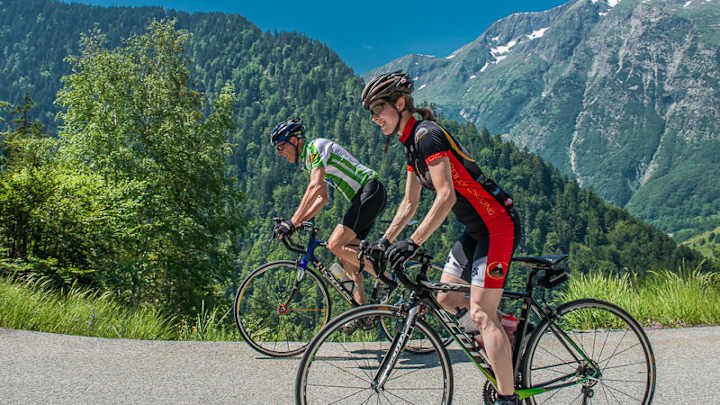
Hours ahead of the caravan of cars and motorcycles on the course and helicopters up above, throngs of excited Tour de France fans line the side of the road awaiting the peloton to race by on Alpe d’Huez. When the cyclists start to appear, the crowd roars with enthusiastic cheers, but the group taking on the challenging French Alps’ terrain during stage 18 isn’t made up of Tour de France cyclists. This group is a small pack of amateur riders from a wide spectrum of backgrounds: garbage men, podiatrists, teachers, flutists, police detectives and yoga instructors, all ranging in age from 35 to 70 years old, all part of a historical cycling trip.
Cycling vacations—especially those scheduled during the Tour de France—are increasingly popular, but FintanMcCormac, one of the chief organizers from New Jersey-based Reilly Cycling Tours, says his company is a modest mom-and-pop shop compared to the other “Walmarts” in the industry. The Alpine stages trip travels to France during the height of the Tour and can only accommodate up to 16 riders, plus eight staff members. “We give individual attention—there’s a guide for every two people in our trip,” says McCormac.
Steve Widder, a 70-year-old retired parks and recreation department worker, remembers watching the Tour de France on television in the 1980s as a recreational cyclist and dreaming of seeing the mountains in person. He’s traveled with Reilly Cycling Tours to France nine times.
Reilly Cycling at the Tour de France
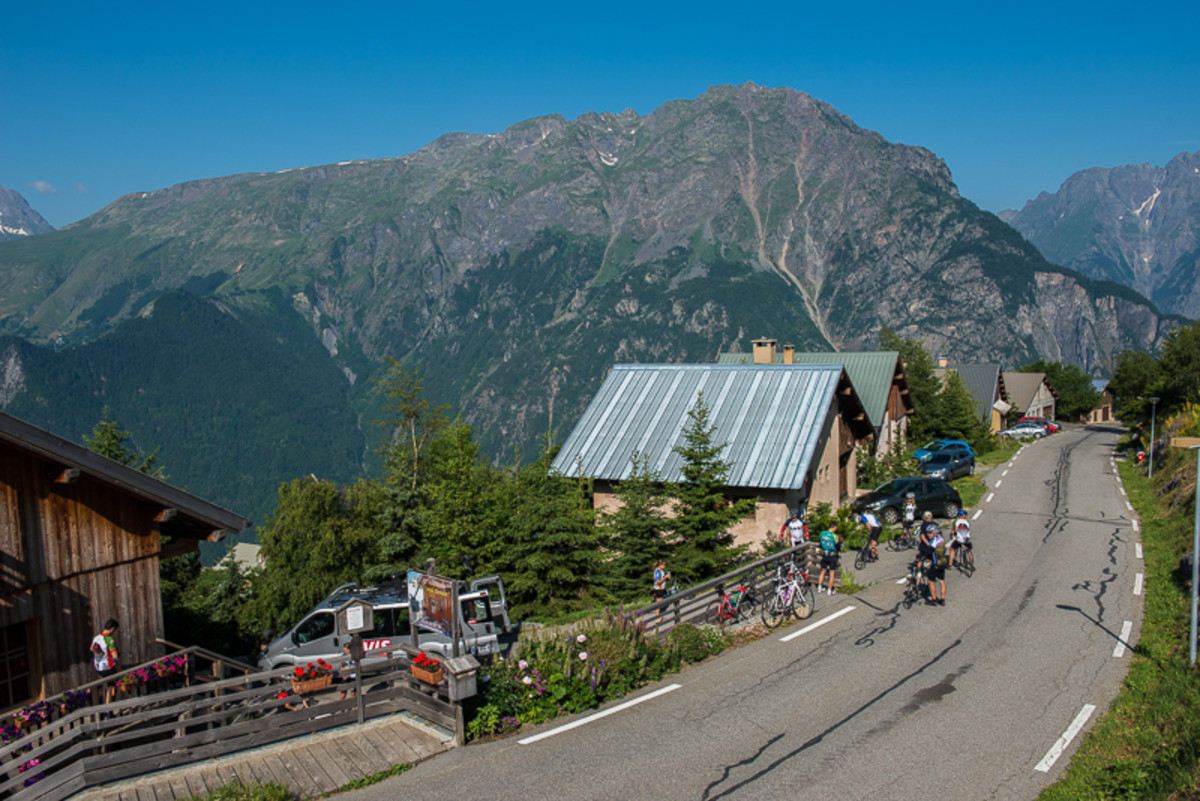
Reilly Cycling at the Tour de France
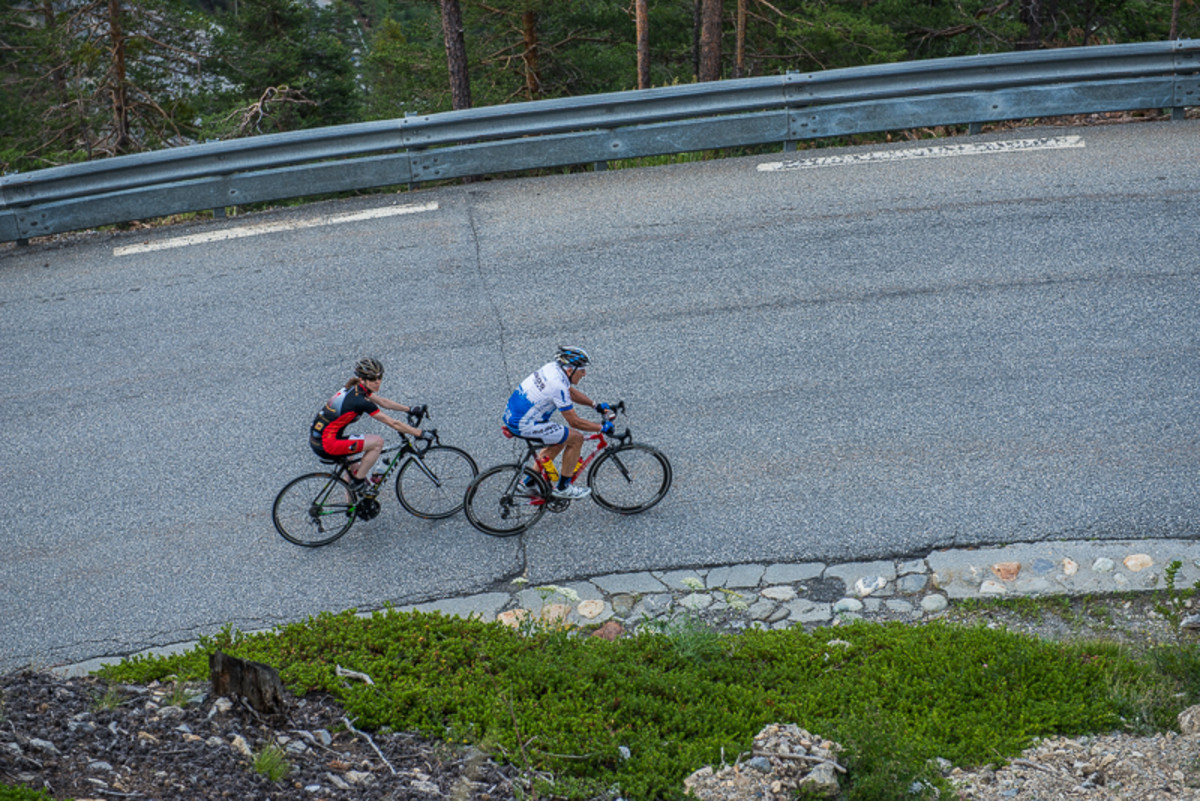
Reilly Cycling at the Tour de France
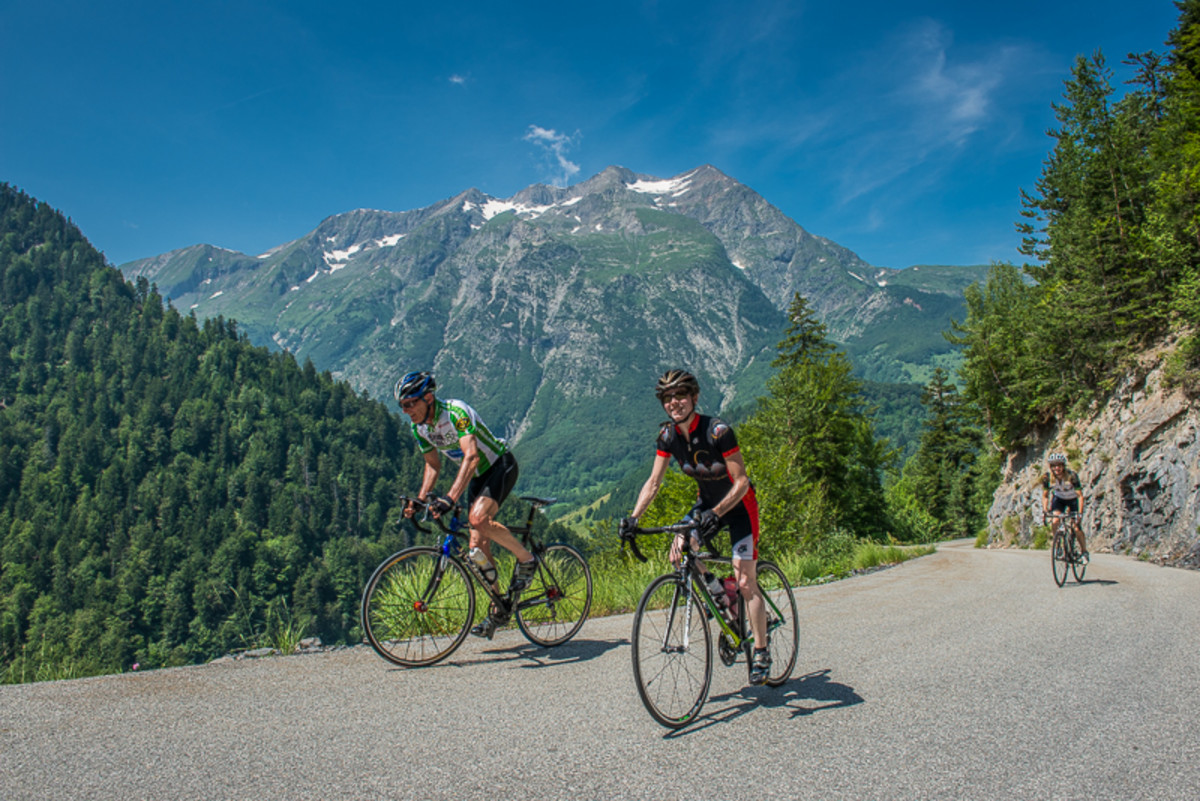
Reilly Cycling at the Tour de France
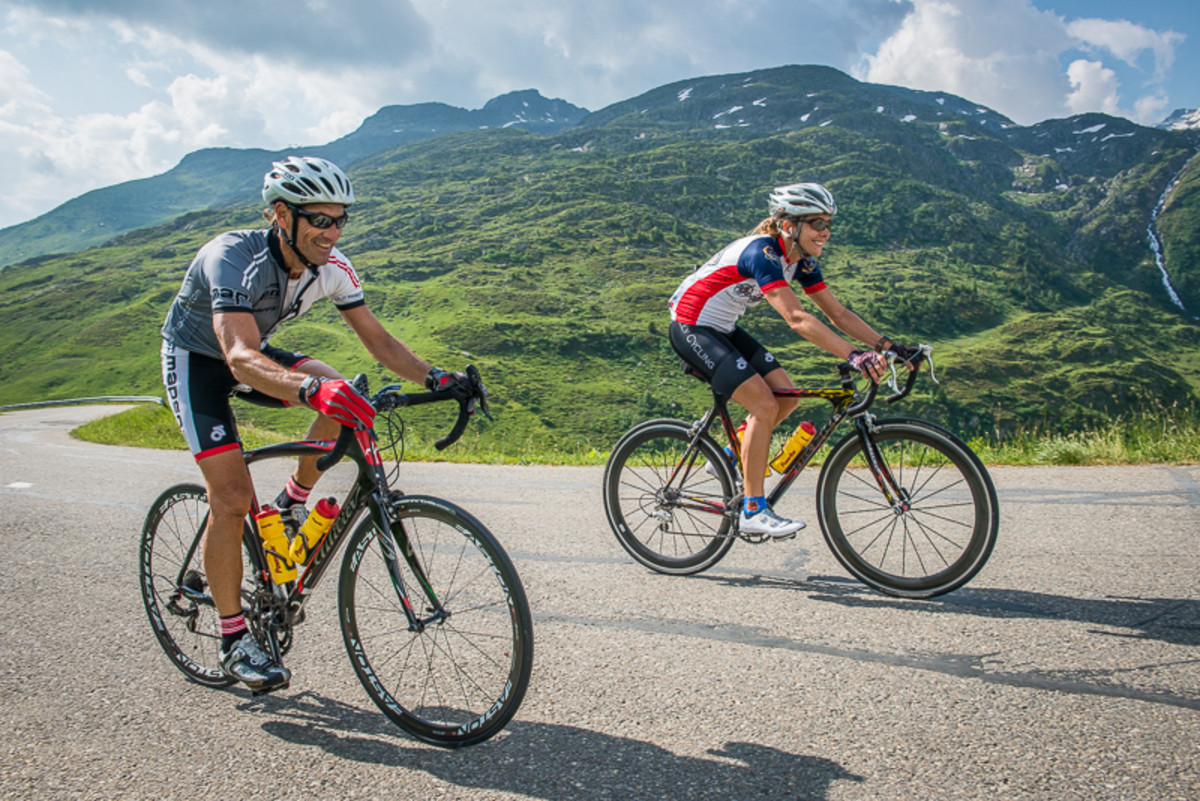
Reilly Cycling at the Tour de France
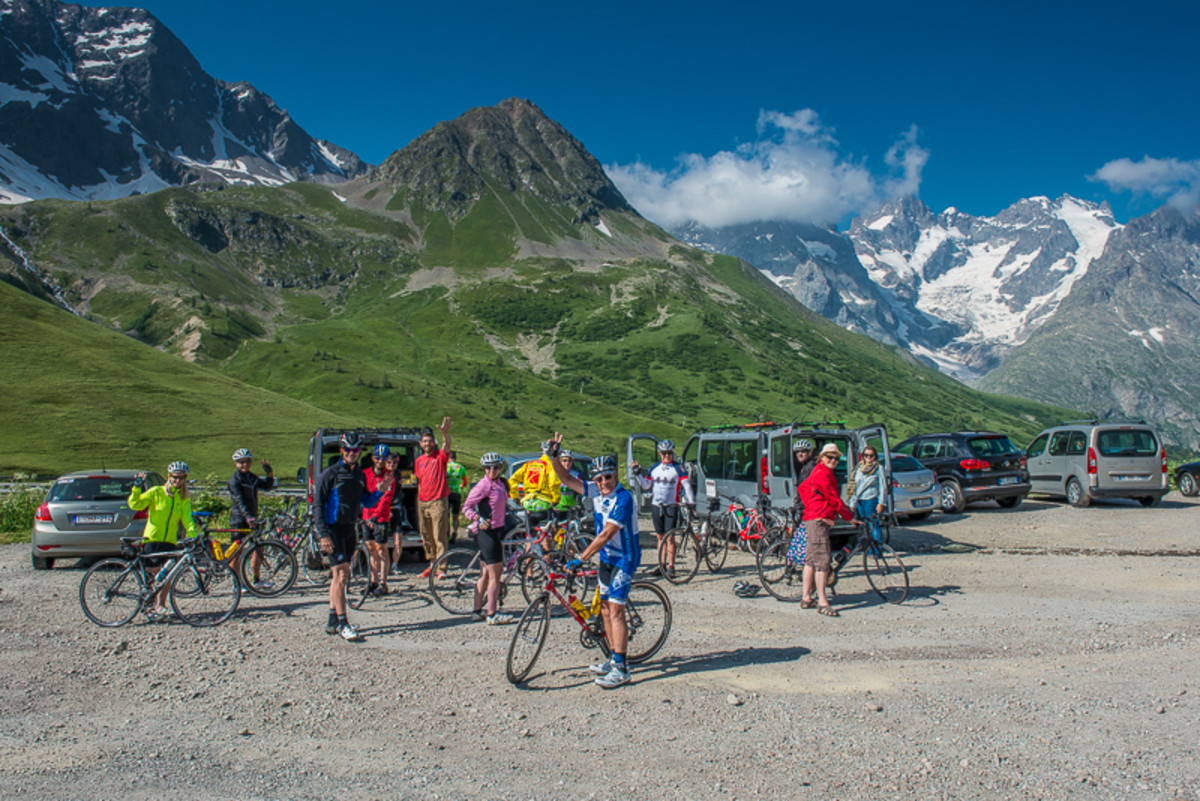
Reilly Cycling at the Tour de France
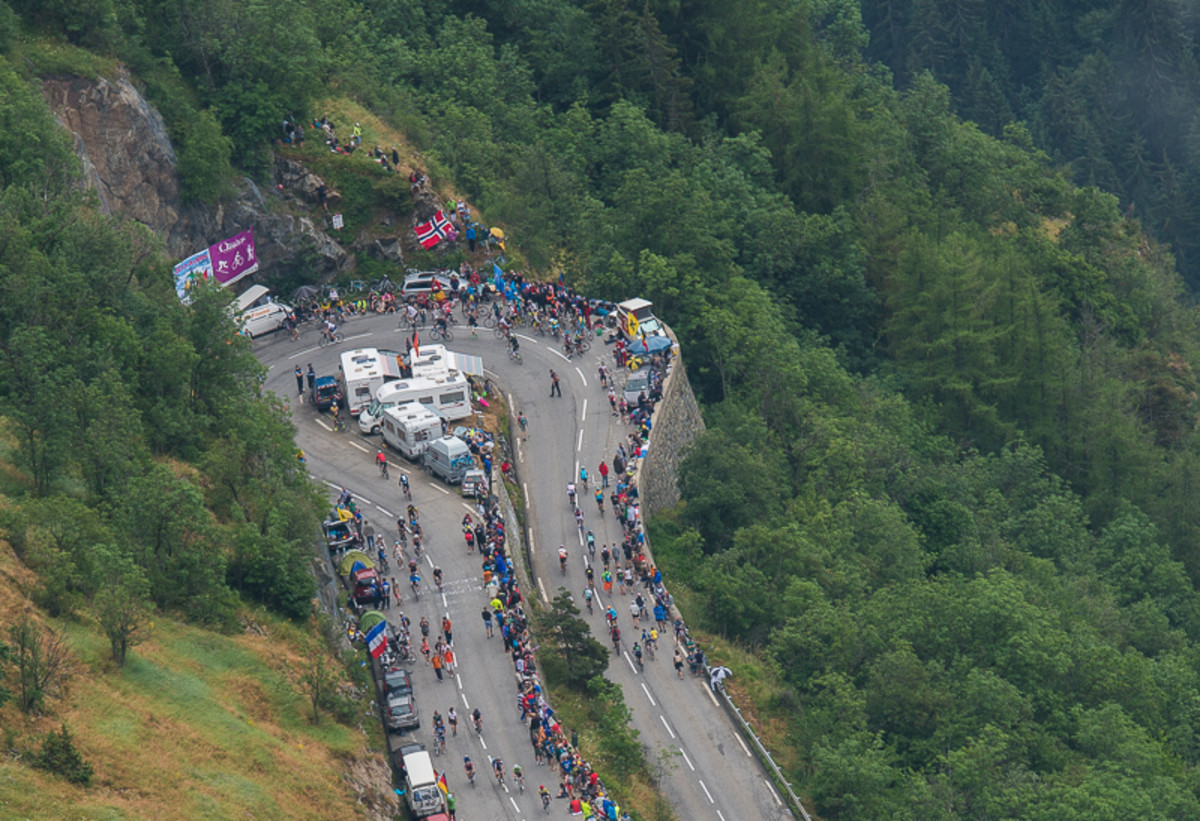
Reilly Cycling at the Tour de France
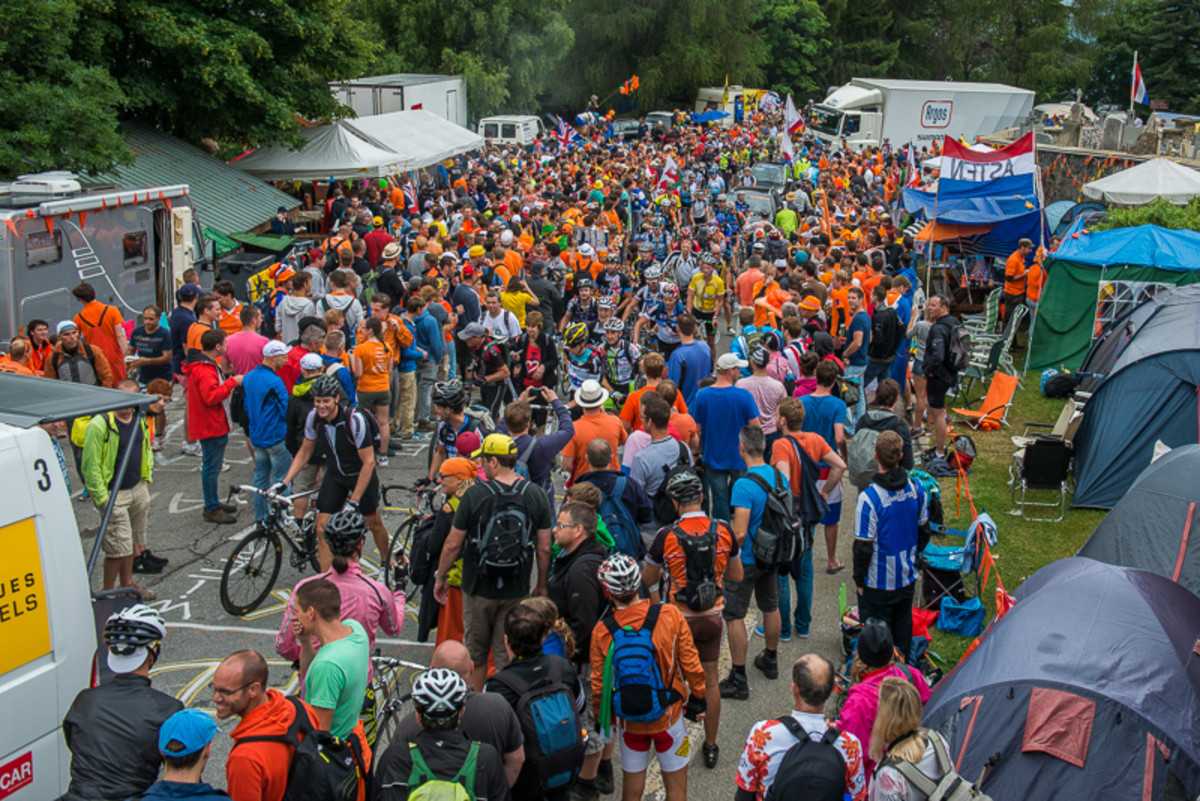
Reilly Cycling at the Tour de France
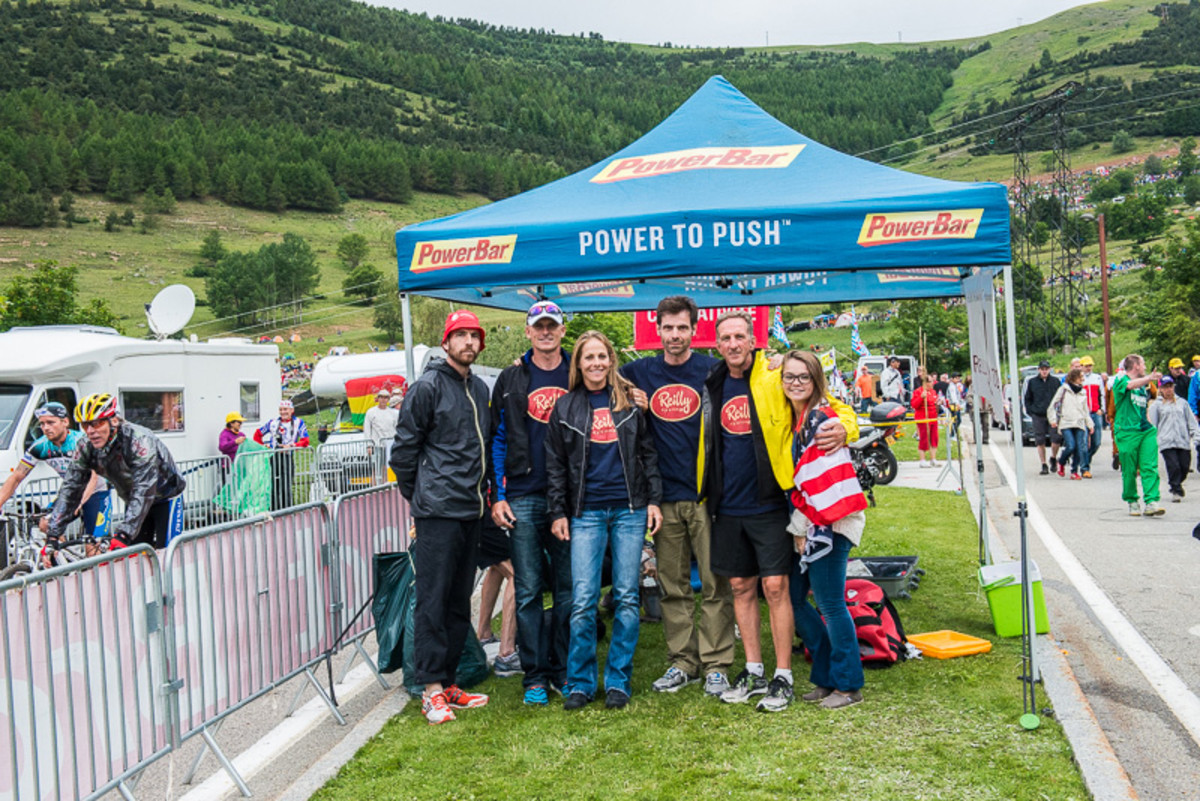
Reilly Cycling at the Tour de France
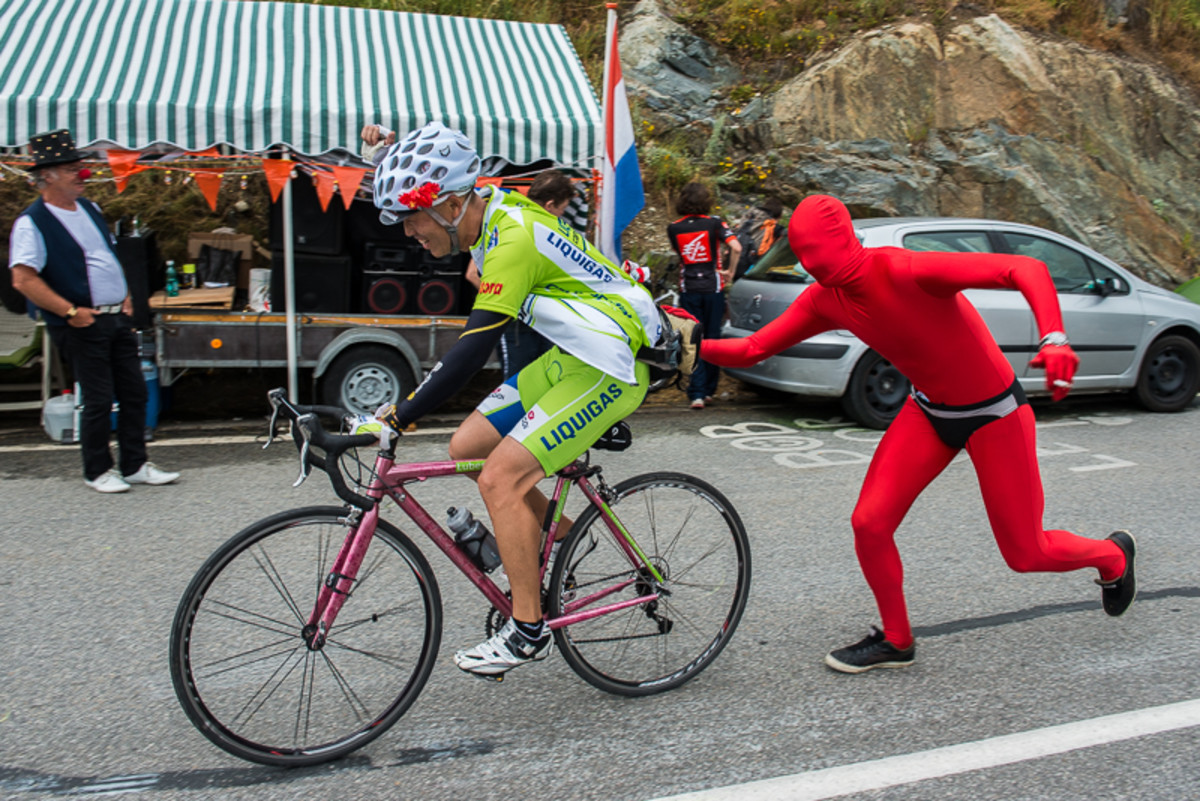
Reilly Cycling at the Tour de France
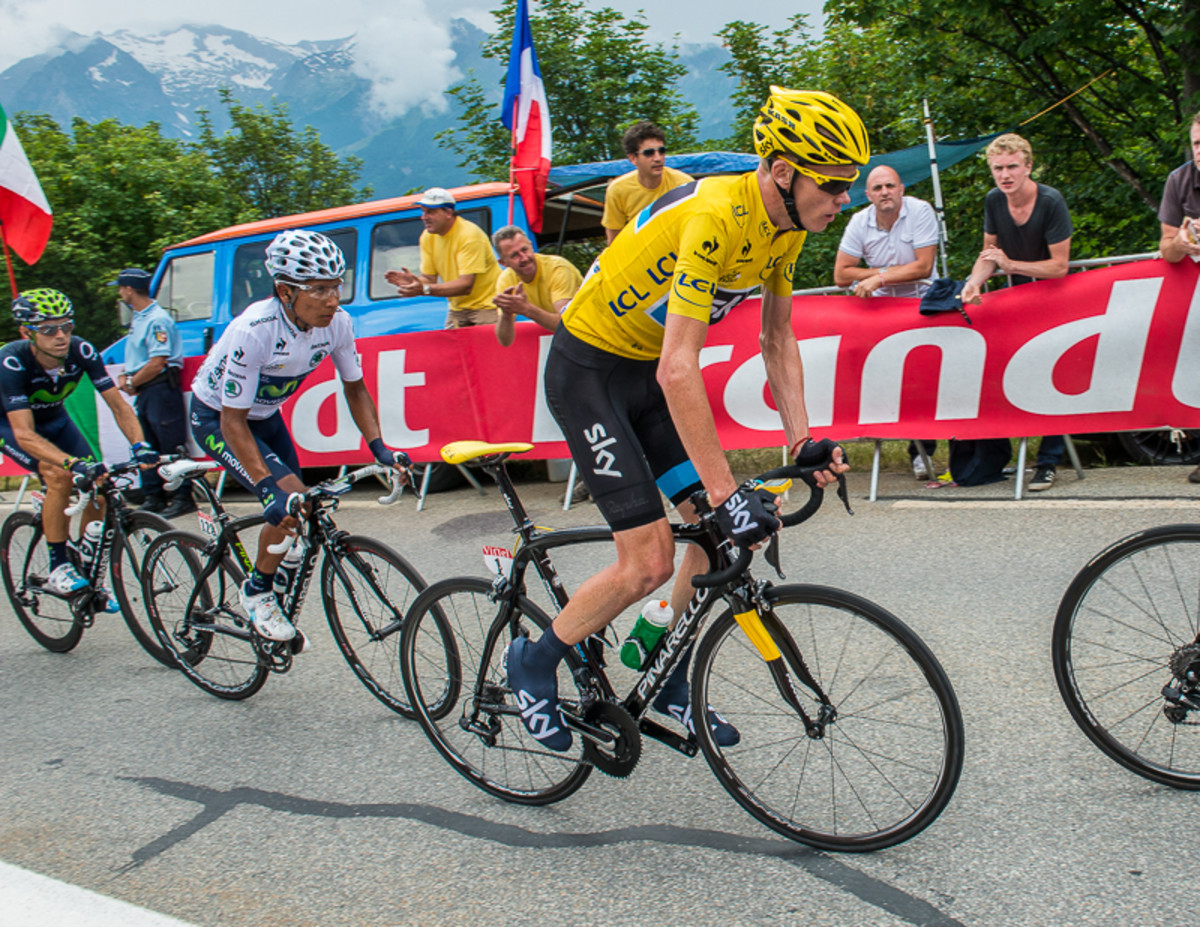
Reilly Cycling at the Tour de France
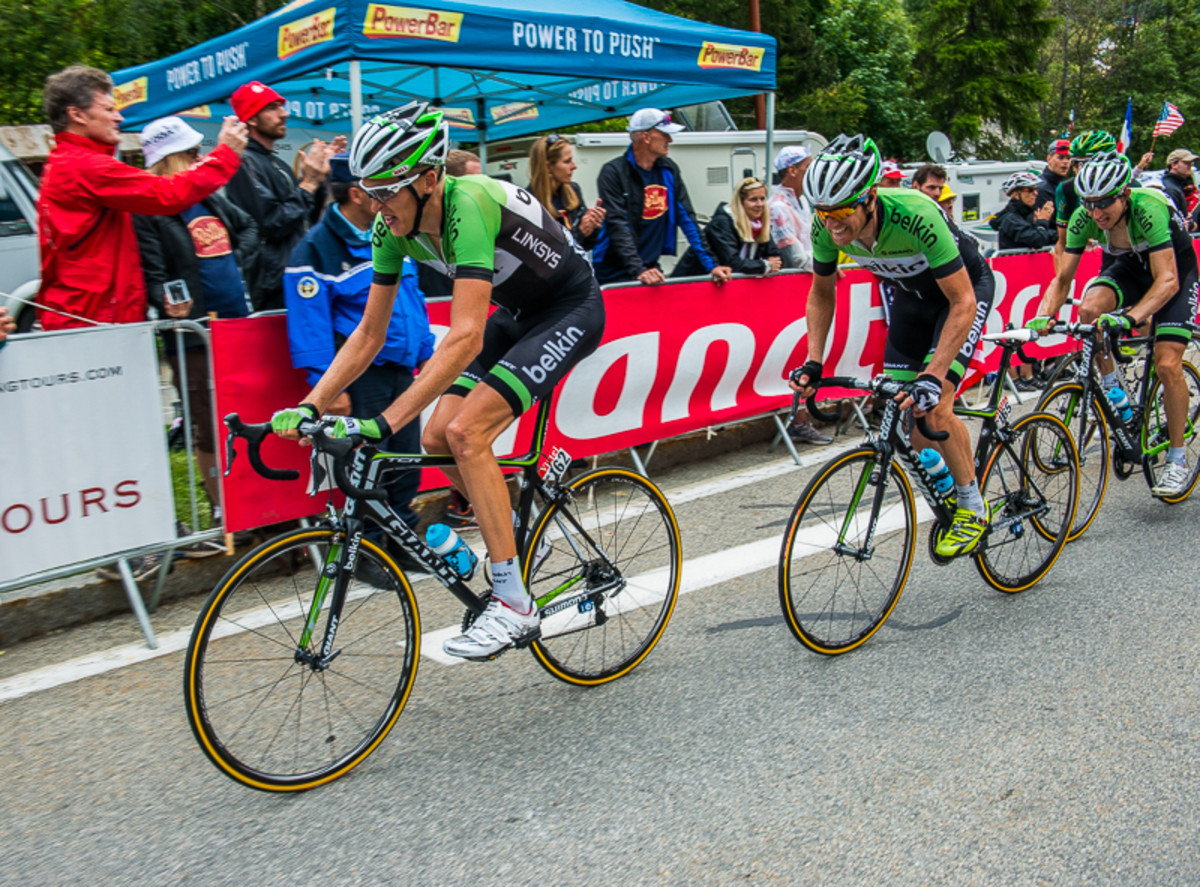
Reilly Cycling at the Tour de France
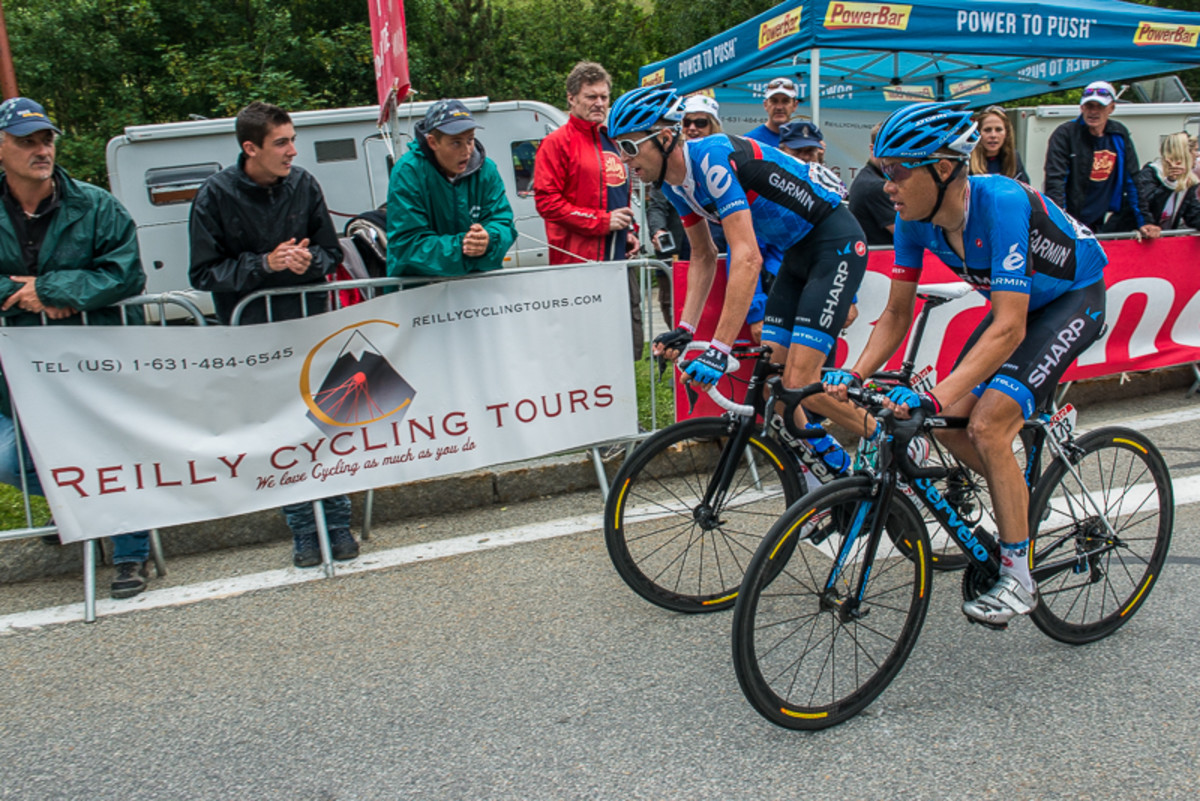
Reilly Cycling at the Tour de France
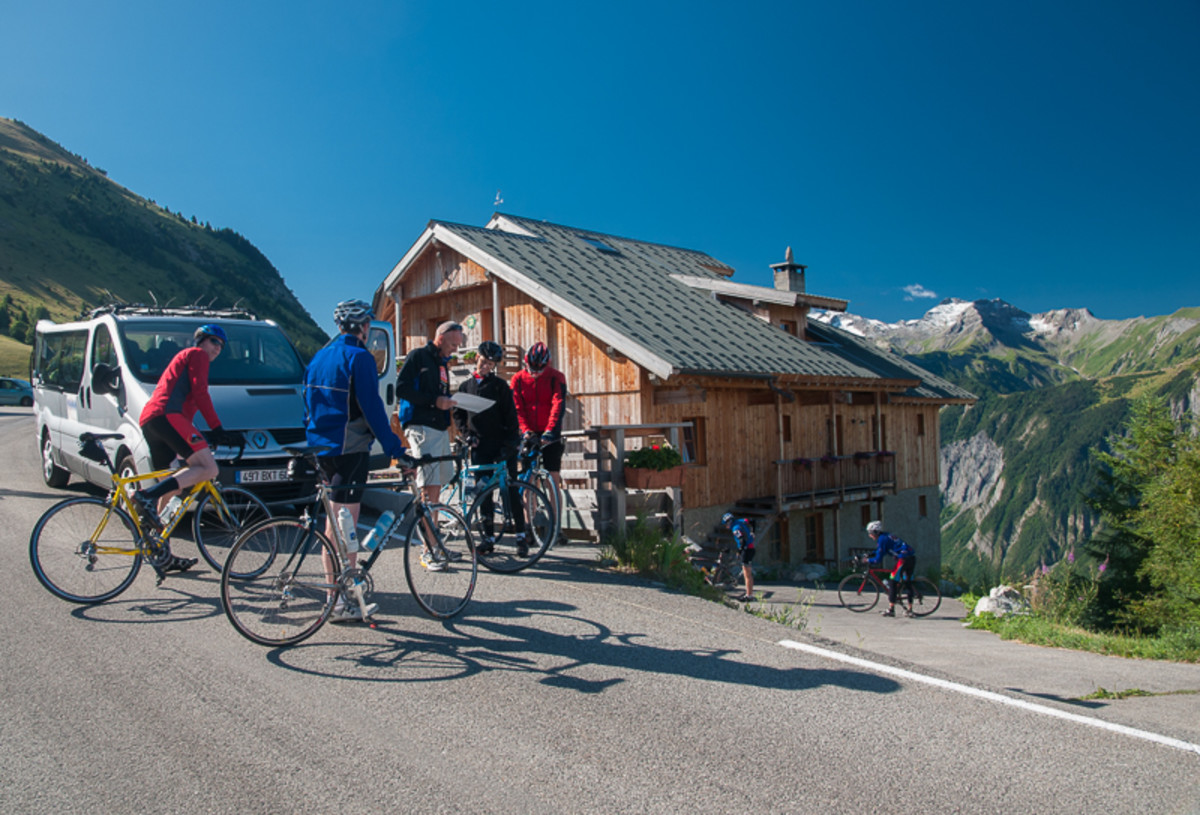
Reilly Cycling at the Tour de France
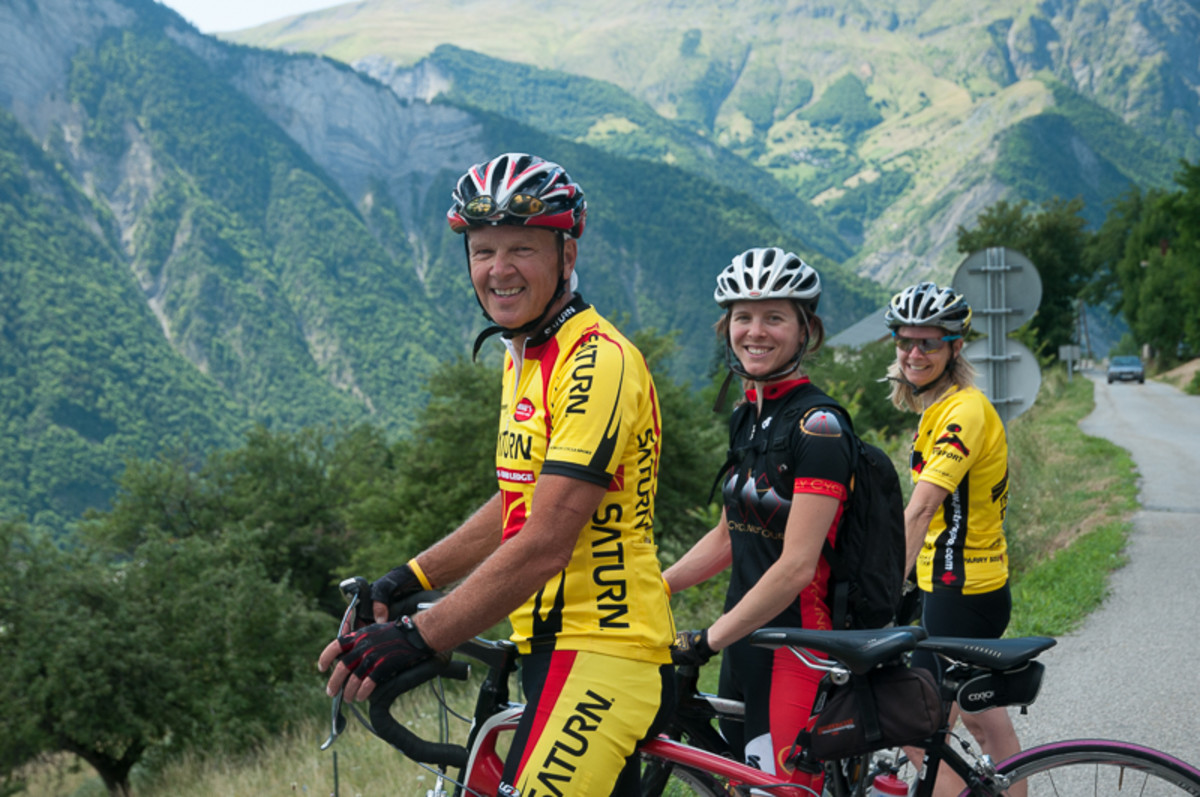
Reilly Cycling at the Tour de France
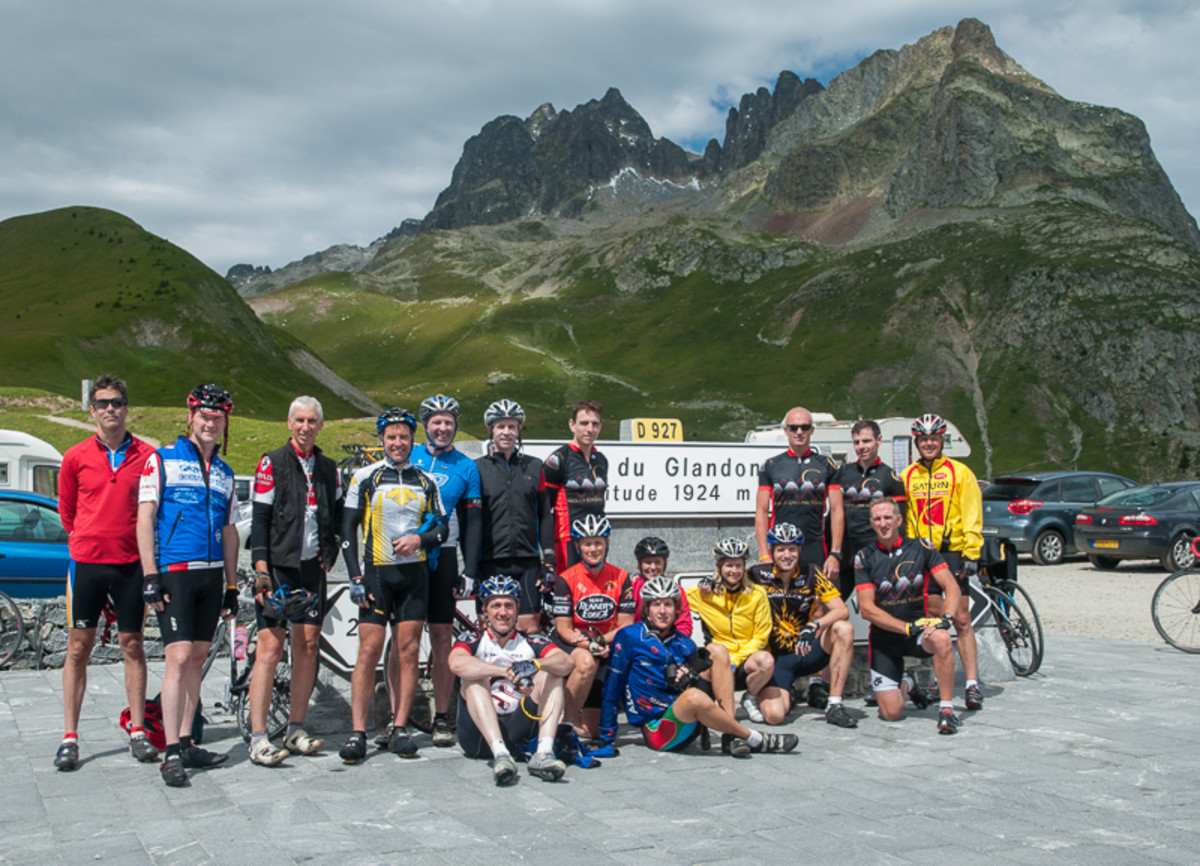
Reilly Cycling at the Tour de France

Reilly Cycling at the Tour de France
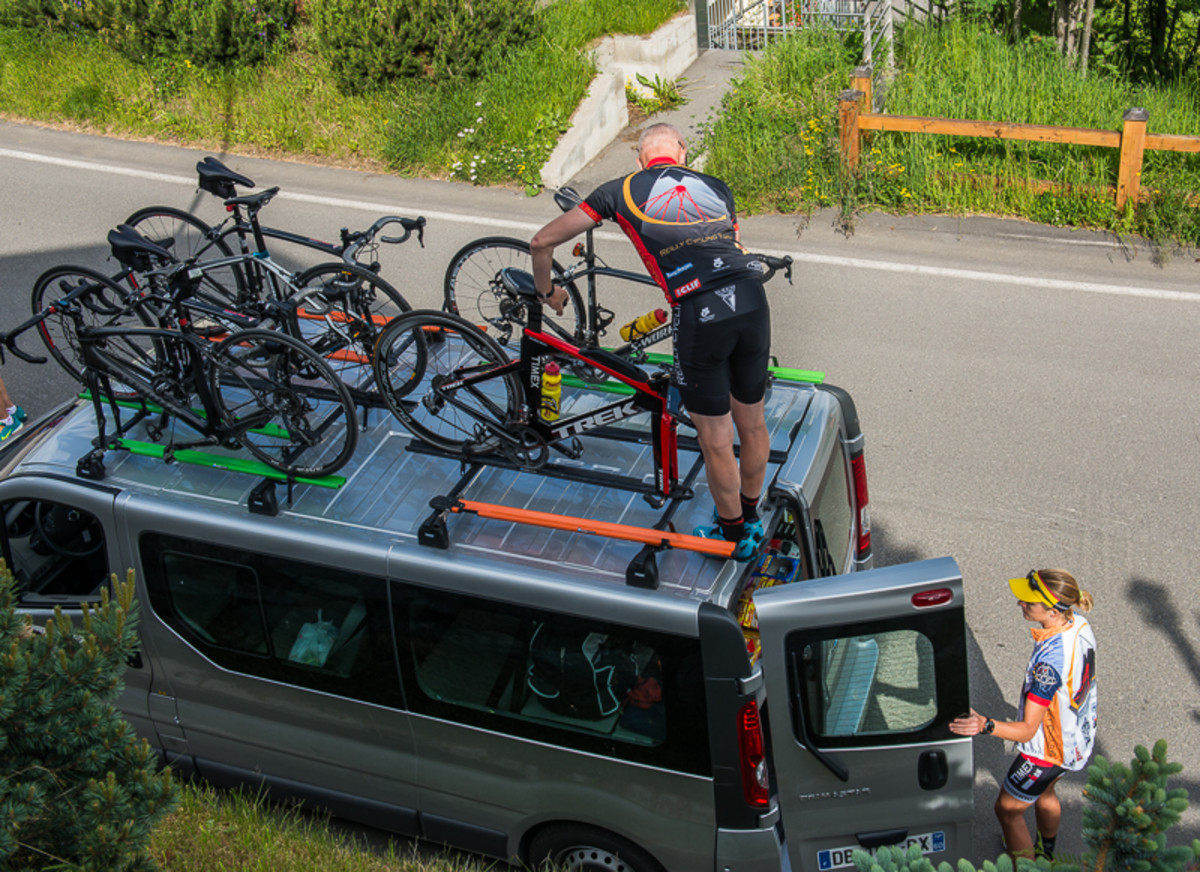
Reilly Cycling at the Tour de France
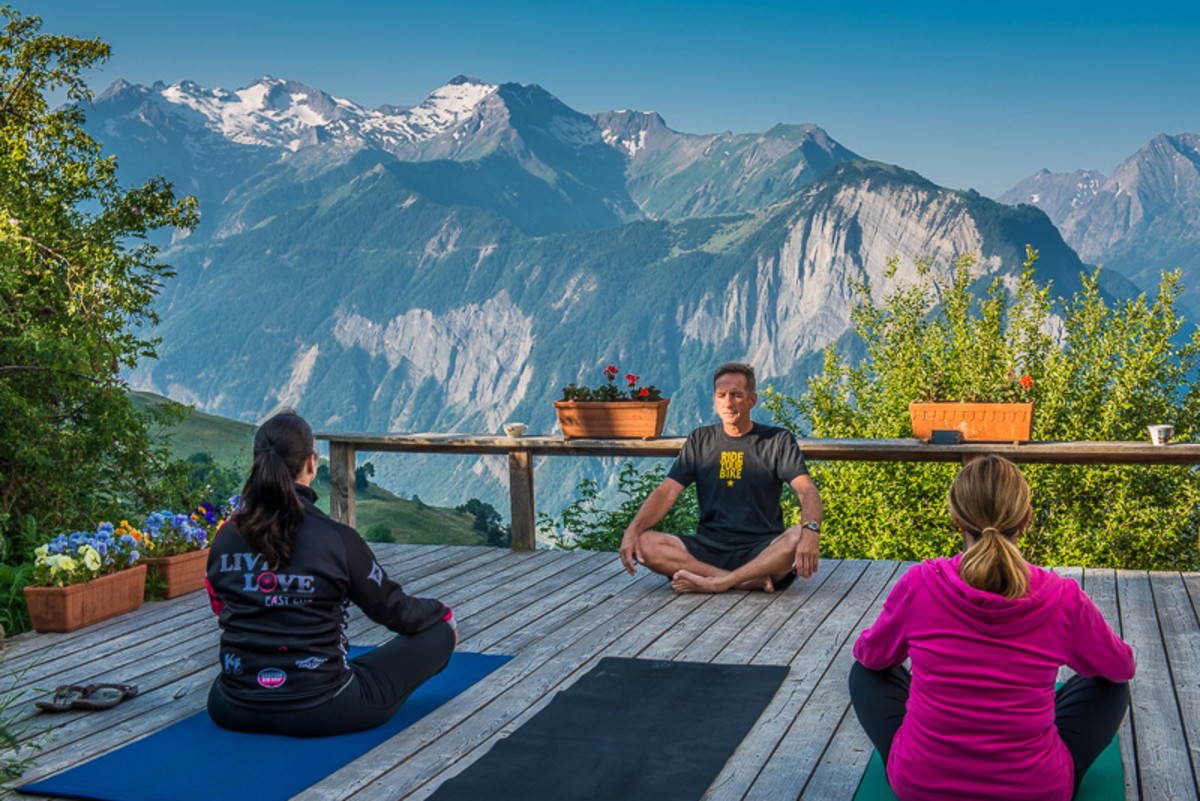
Reilly Cycling at the Tour de France
“We stay in a chalet right next to Alpe d’Huez and get to ride and see some of the most iconic climbs,” Widder says. “The first impression [of the professional riders] is just how fast they are—they go up the mountain 3 to 4 times the speed that we do. Their ability to accelerate in a shortened burst is remarkable. We’re just lucky to maintain our pace.”
Widder says witnessing the speed of the Tour de France riders in person is incomparable to watching the competition on television. McCormac estimates that while his riders may complete the climb at about 6 mph with an all out effort, the Tour cyclists swiftly pass by at 16 to 20 mph. But for ordinary folk or extraordinary athlete, the distress and determination to push through the pain on the course is still evident.
The Tour de France Through the Years
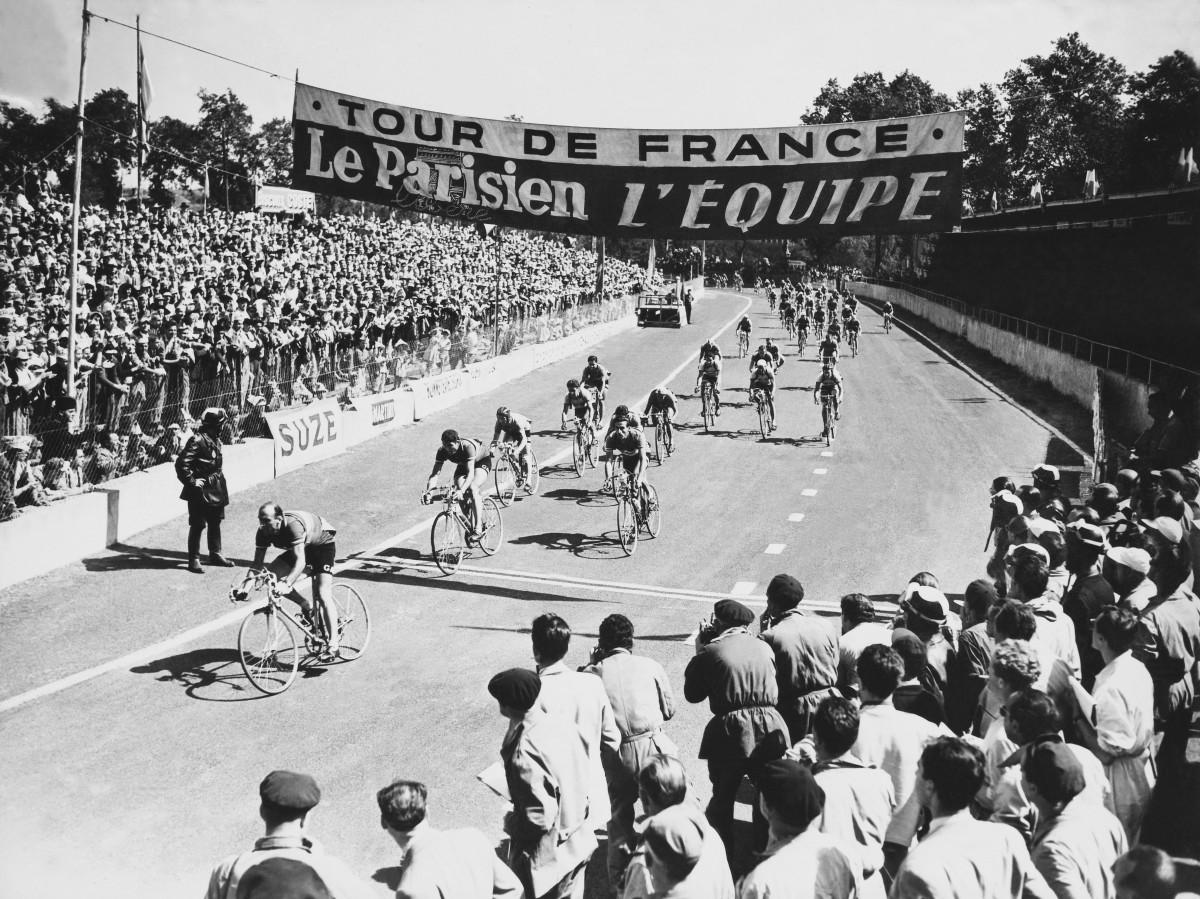
The arrival of the cycling bunch at Albi in France at the first Tour de France in 1903.
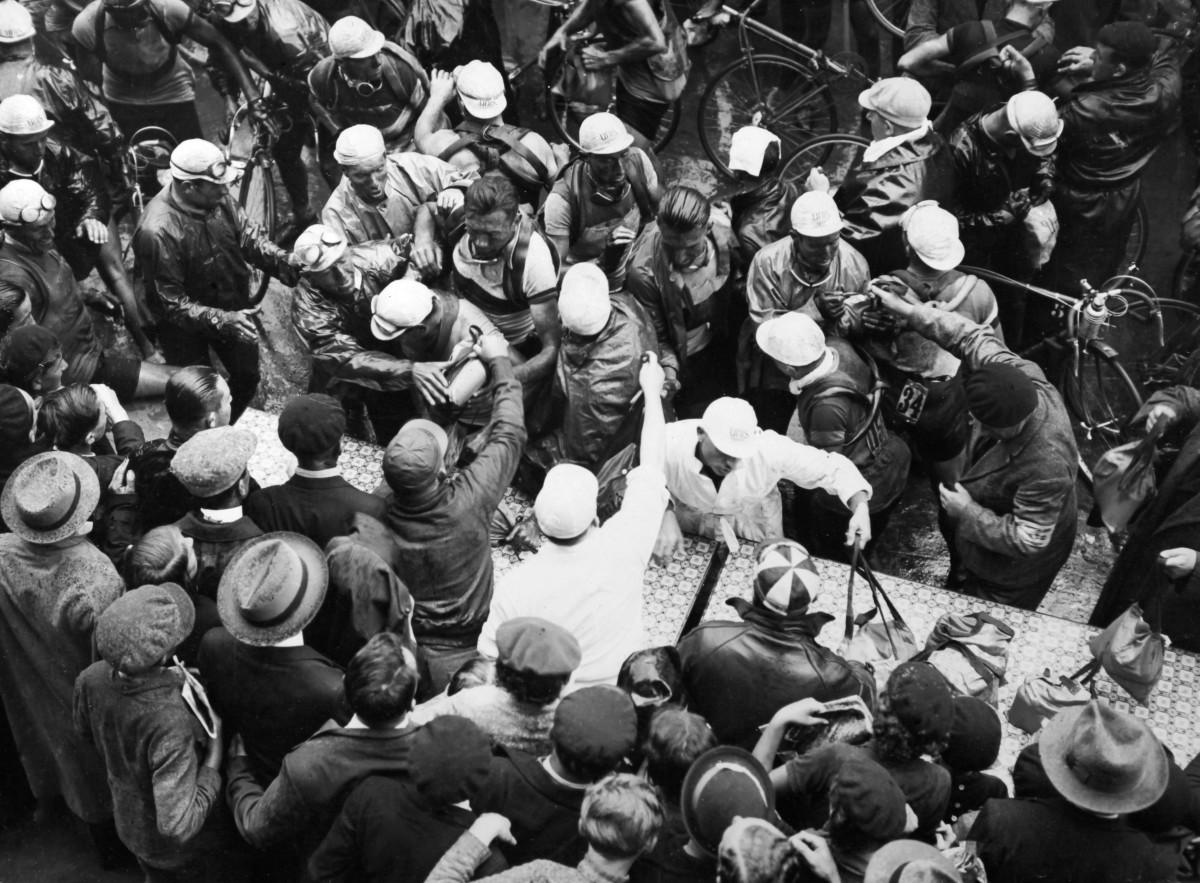
Cyclists taking their bag of provisions on the Tour de France.
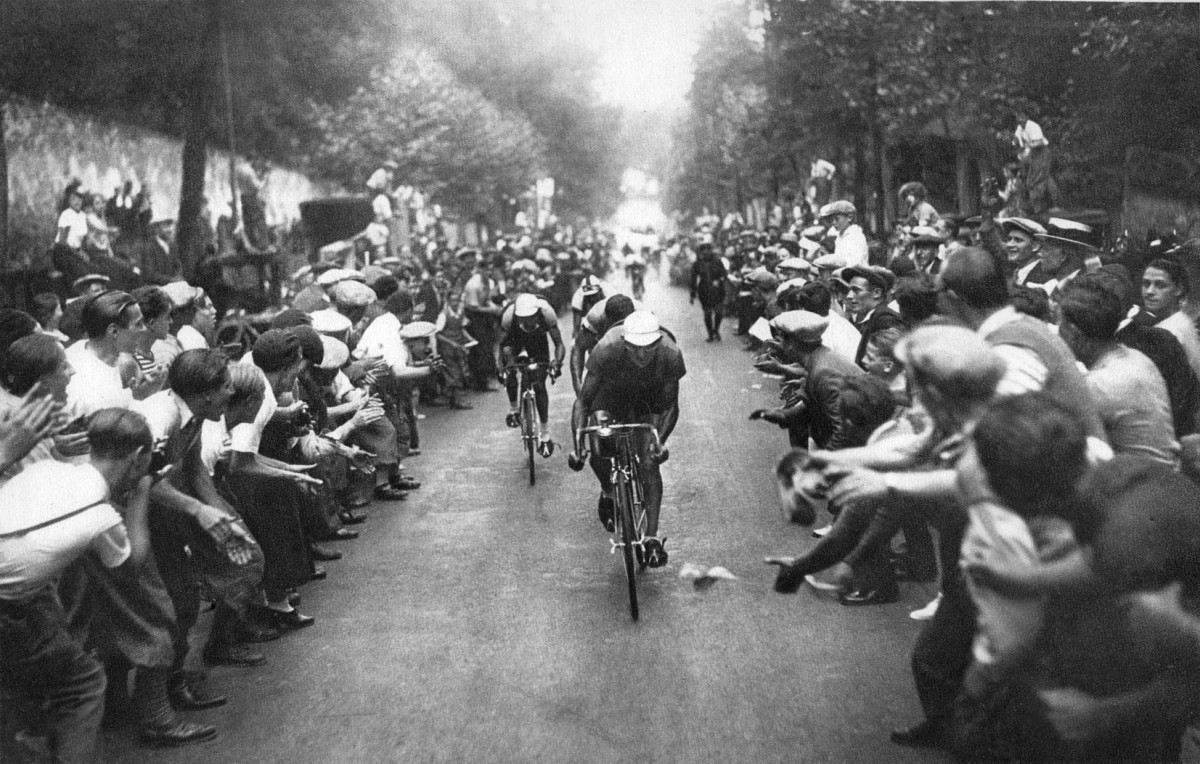
La Foule des Jeunes au 'Tour de France: les voila! (The crowd of young people at the Tour de France: here they are!)
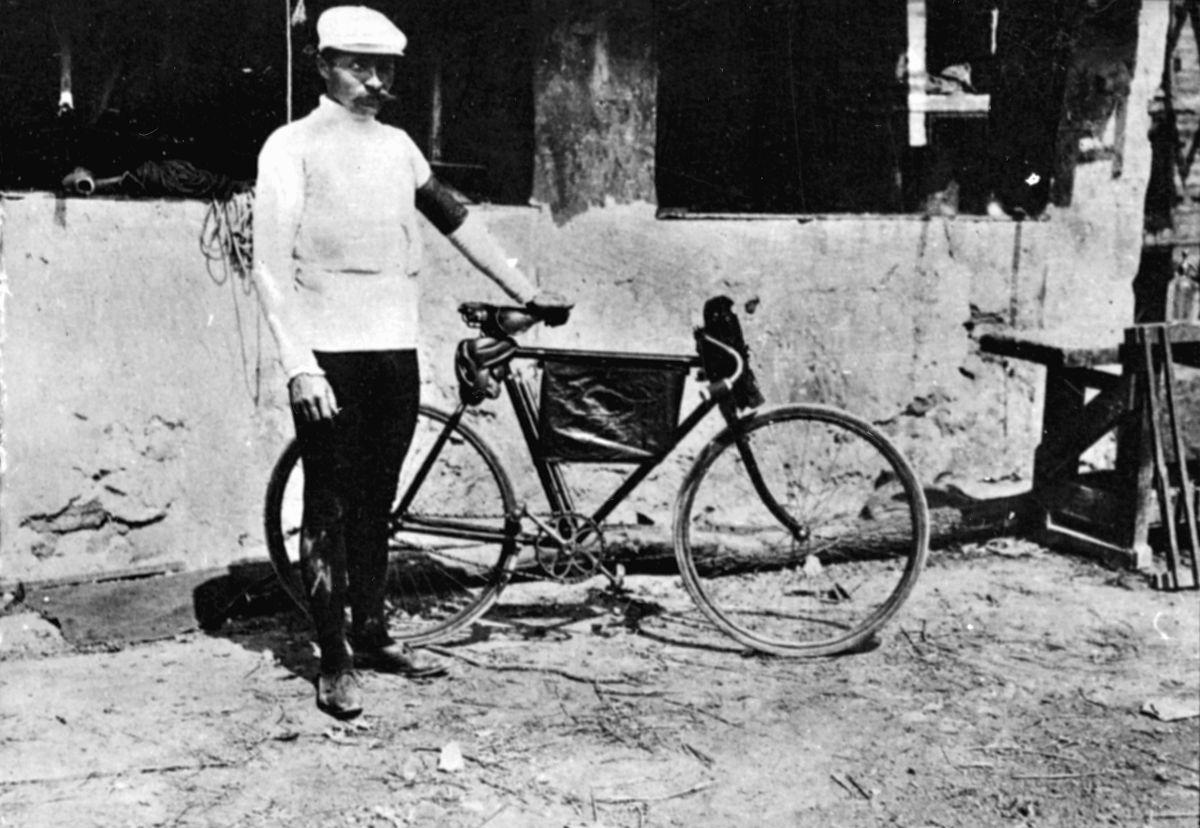
French racing cyclist Maurice Garin, winner of the first Tour de France in 1903.
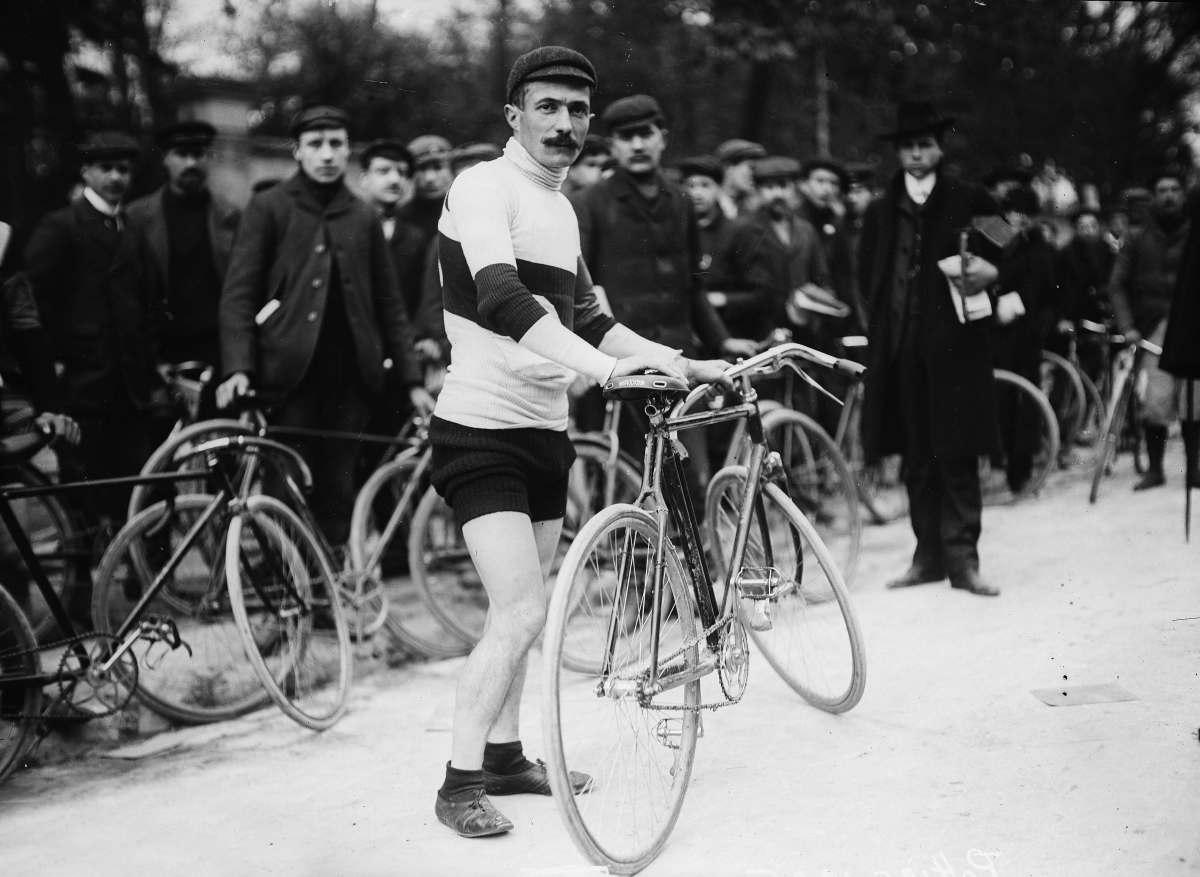
Rene Pottier, a French racing cyclist in the Tour de France in 1905.
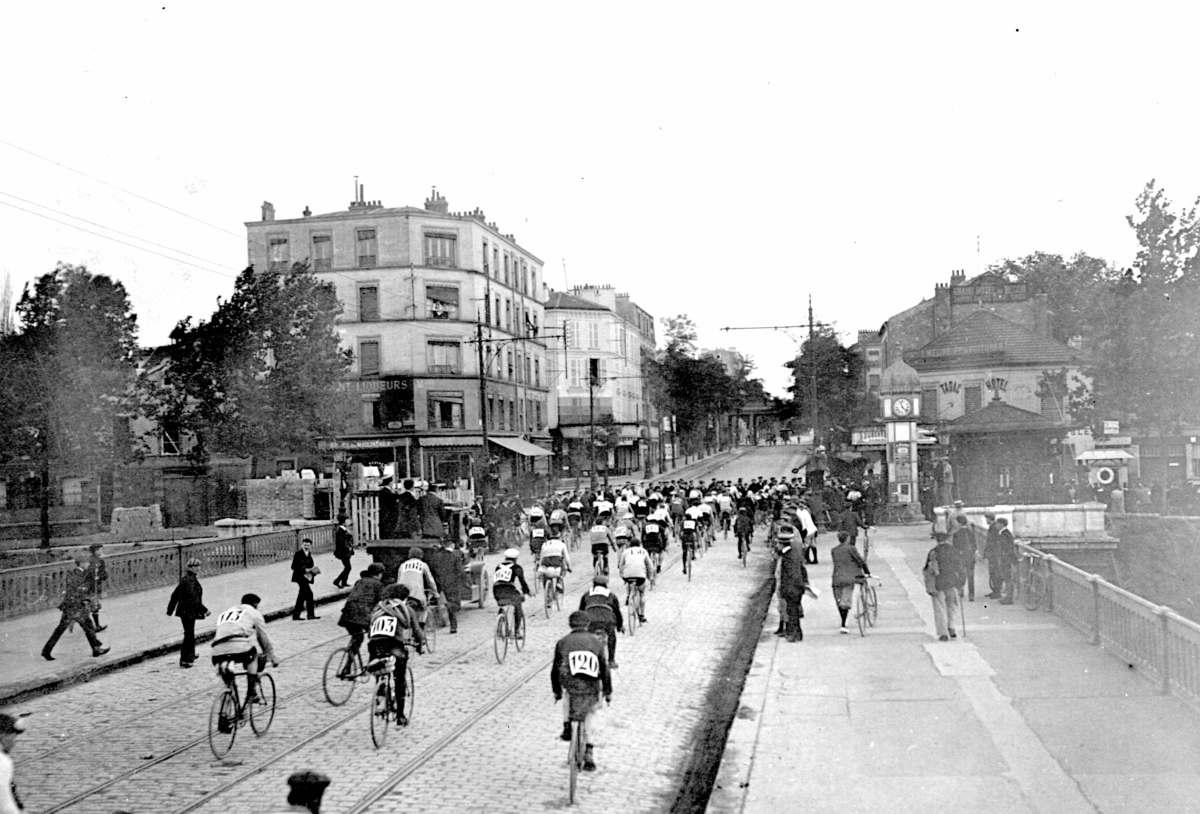
The start of the 1908 Tour de France in Paris on July 13, 1908.
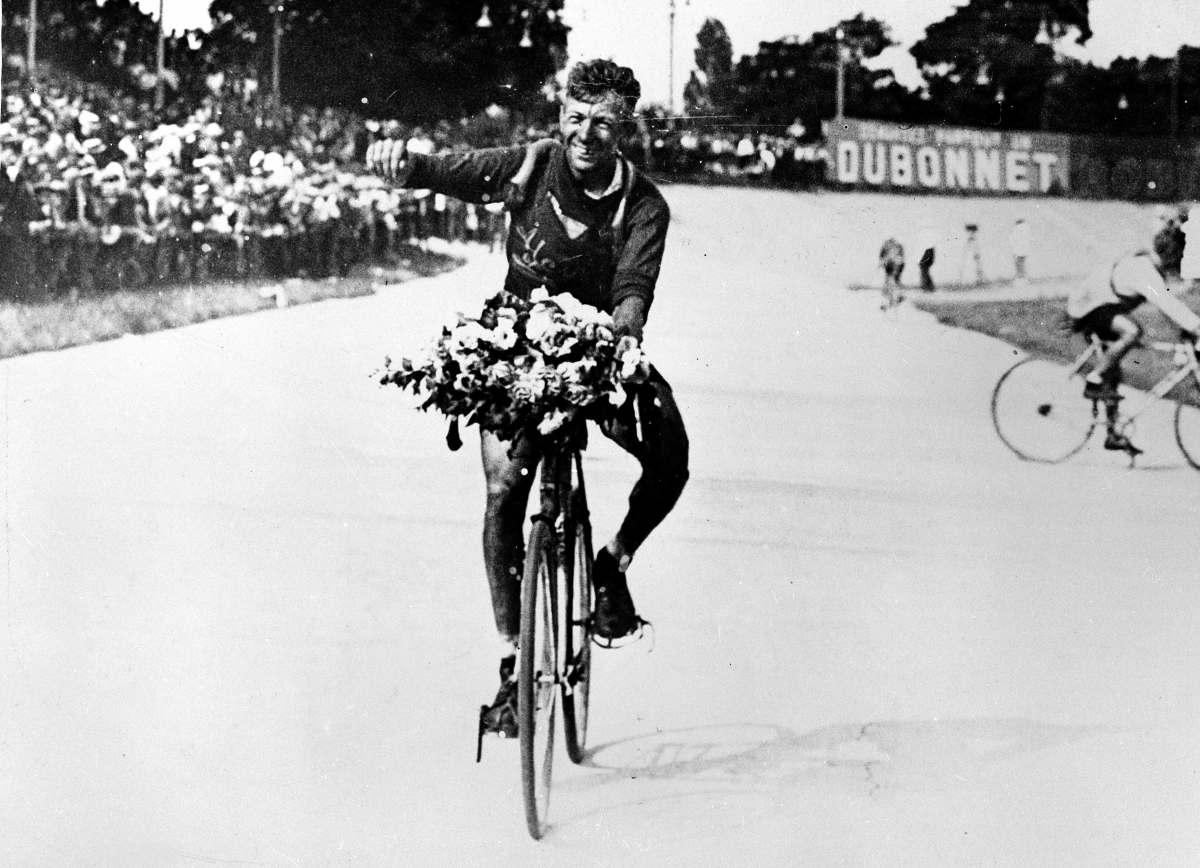
Racing cyclist Nicolas Frantz, from Luxembourg, celebrates his Tour de France victory, in Parc des Princes, Paris, on July 15, 1928.
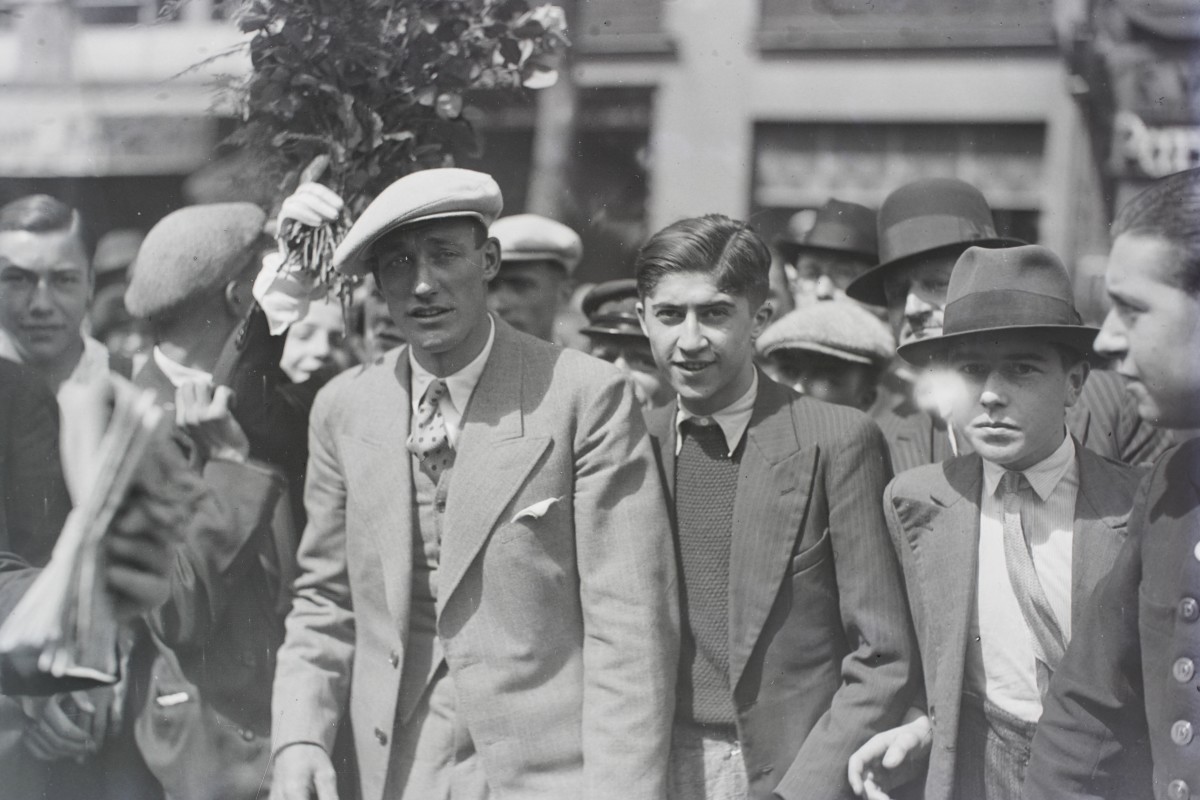
French cyclist Andre Leducq (left) won the Tour de France in 1932.
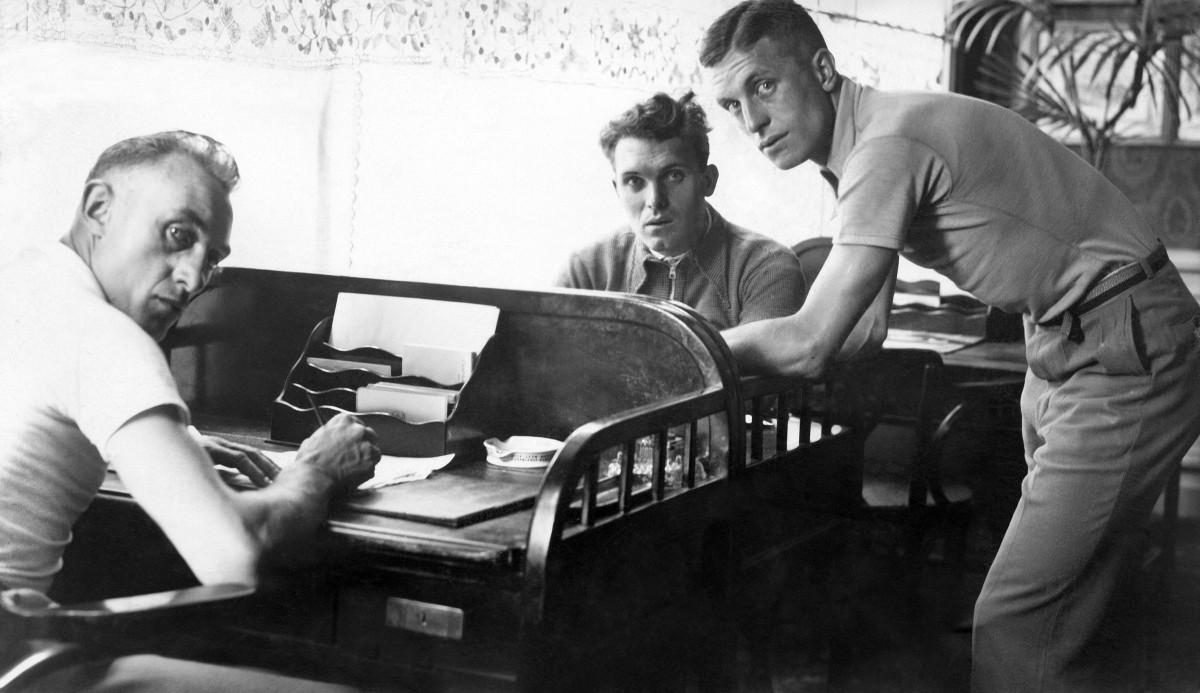
Belgian team racing cyclists Georges Ronsse (left), Frans Bonduel (center) and Jean Aerts (right) write letters during a rest time of the Tour de France, on July 8, 1932 in Nantes.
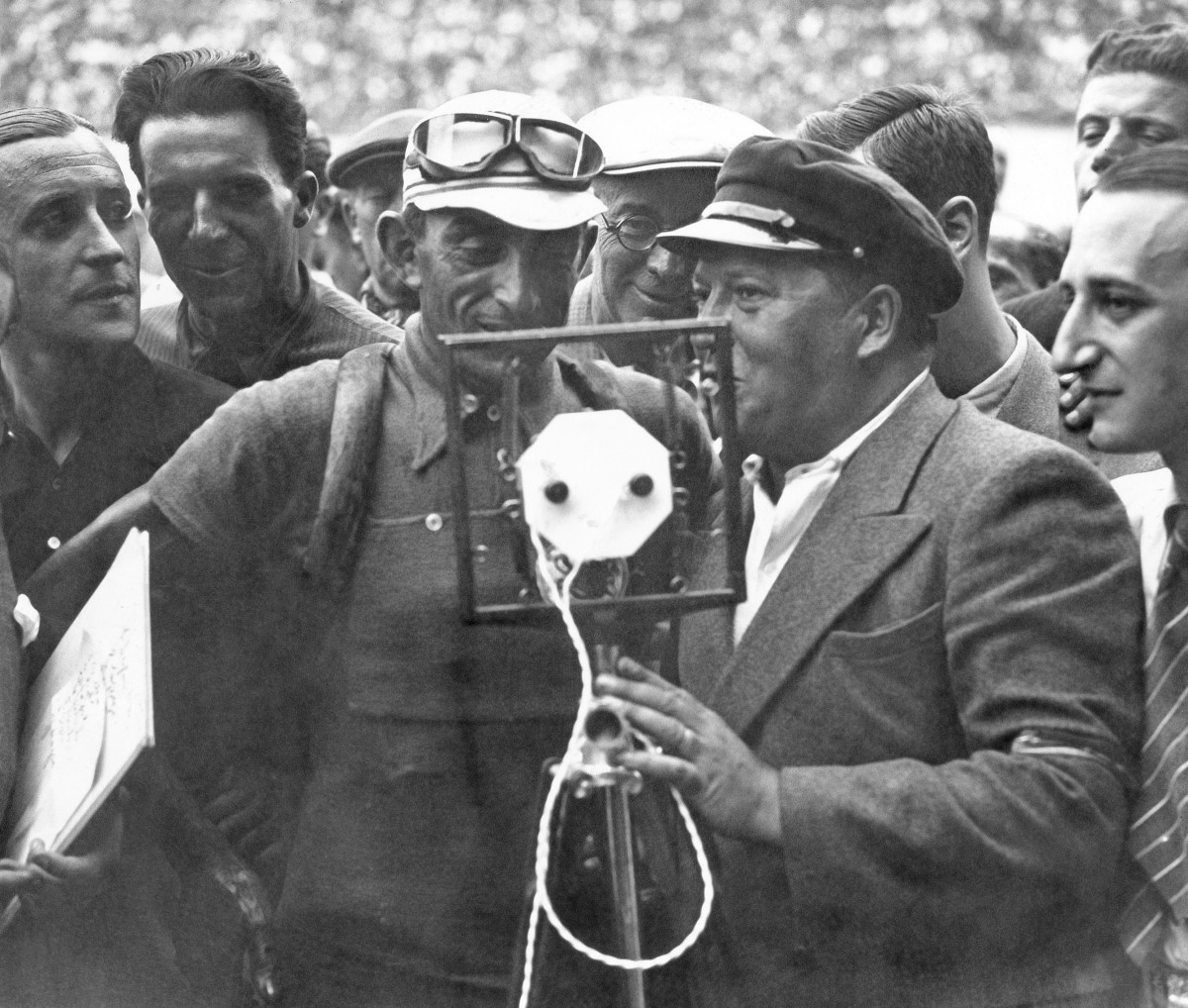
French racing cyclist Antonin Magne (left), winner of the 28th Tour de France is interviewed at the end of the 23rd stage Caen-Paris, on July 29, 1933.
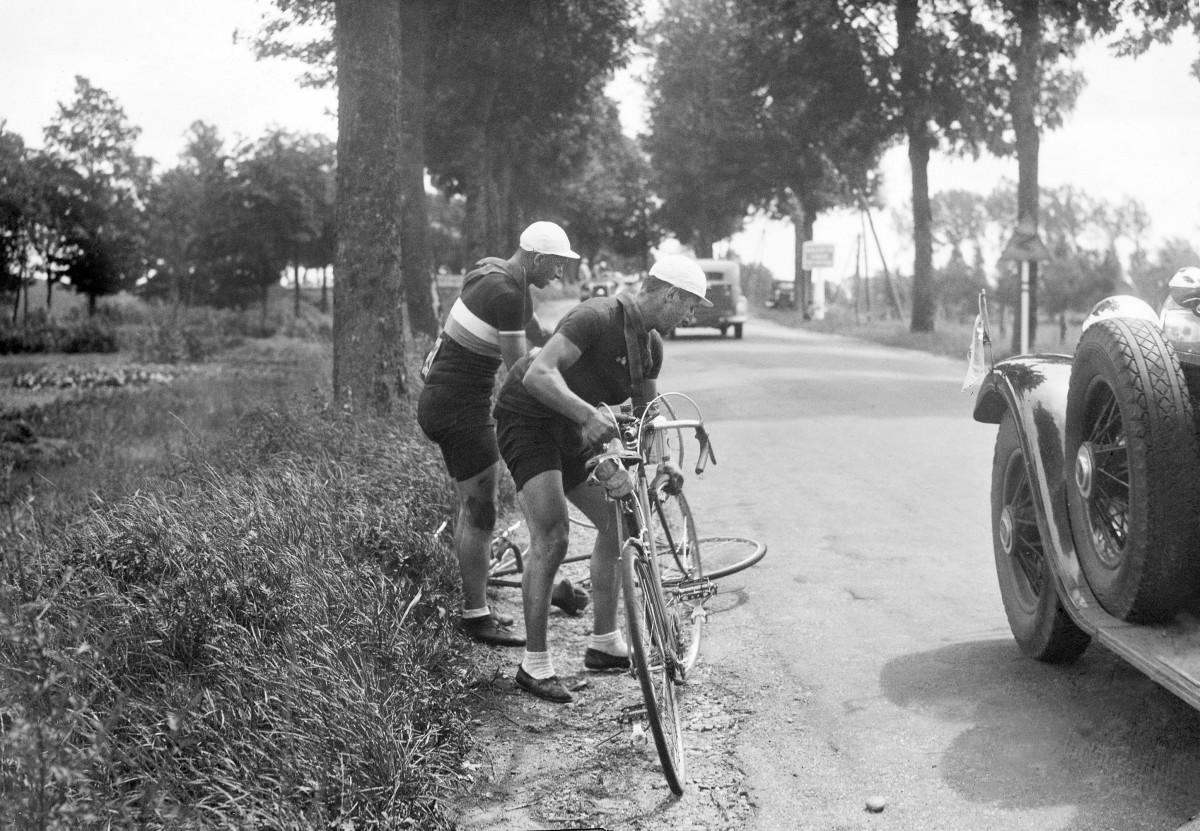
Racing cyclist Arsene Mersch of Luxembourg changes his wheel with Josy Krauss one's after a puncture during the fourth stage of the Tour de France, on July 10, 1934.
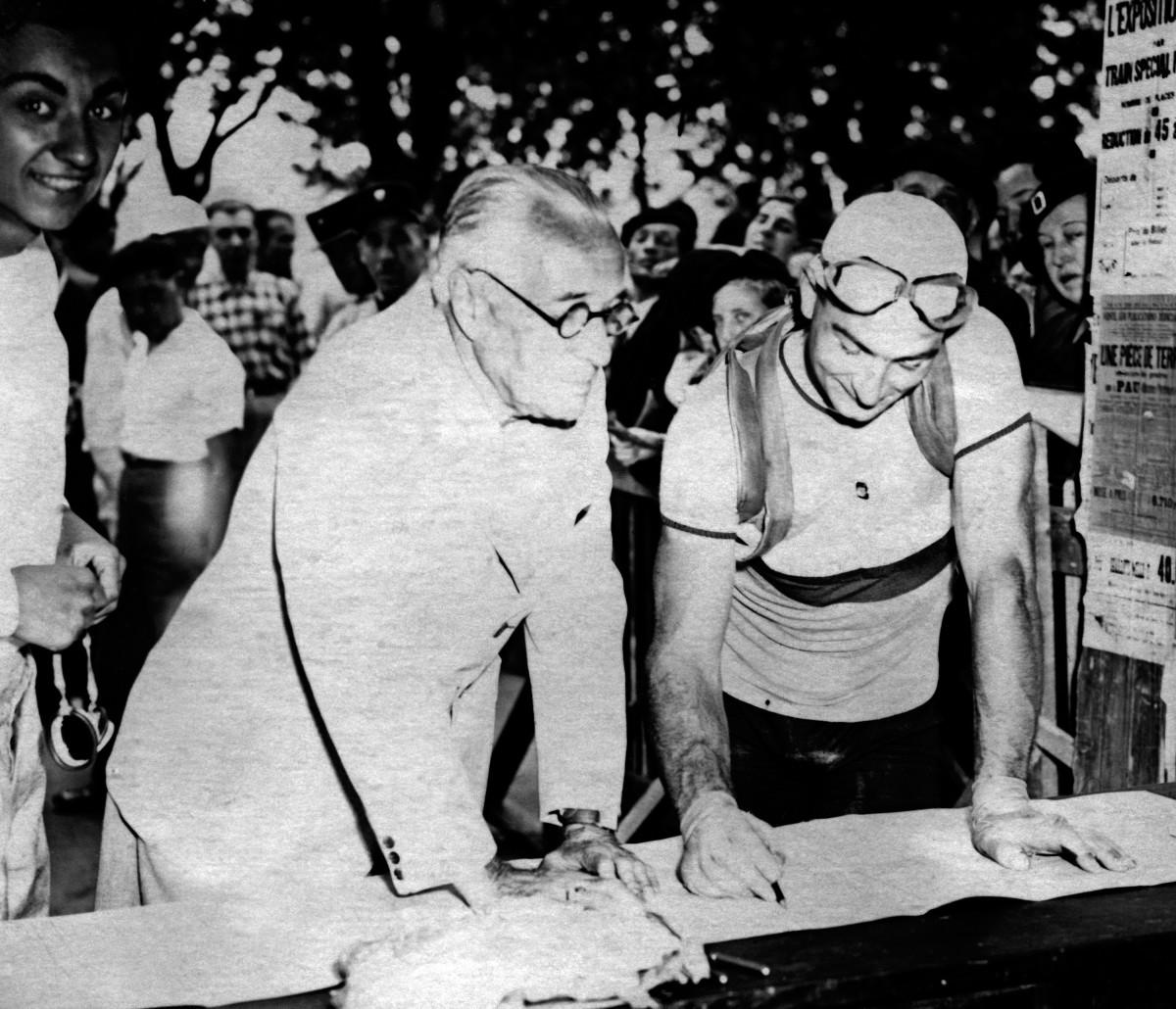
Henri Desgrange (left), founder of the Tour de France, stands next to French rider Roger Lapebie on July, 21, 1937 in Pau, before the start of the 16th stage between Pau and Bordeaux.
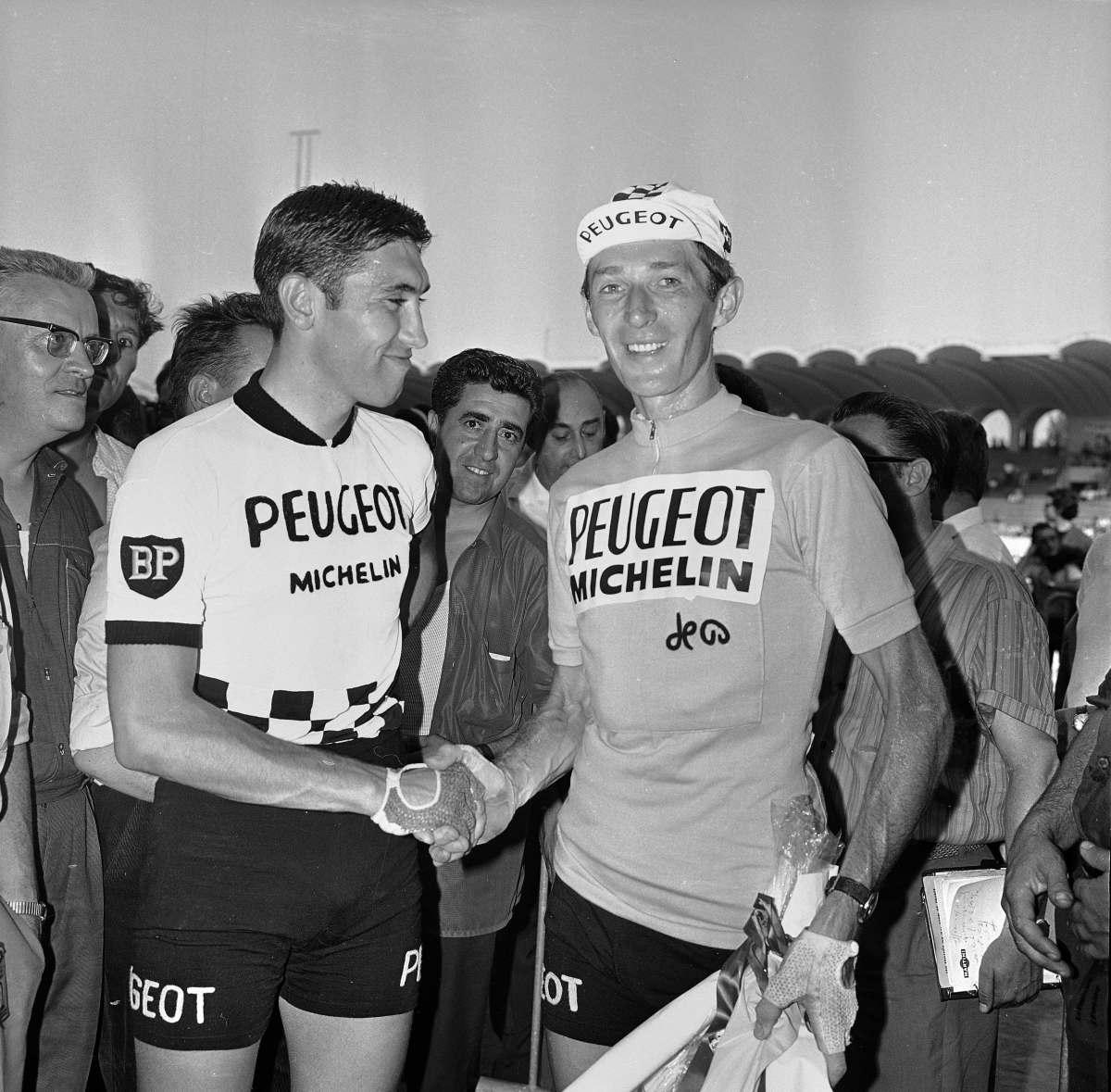
Roger Pingeon, French racing cyclist and winner of the Tour de France 1967 (right), shaking hands of Eddy Merckx (left), Belgian racing cyclist.
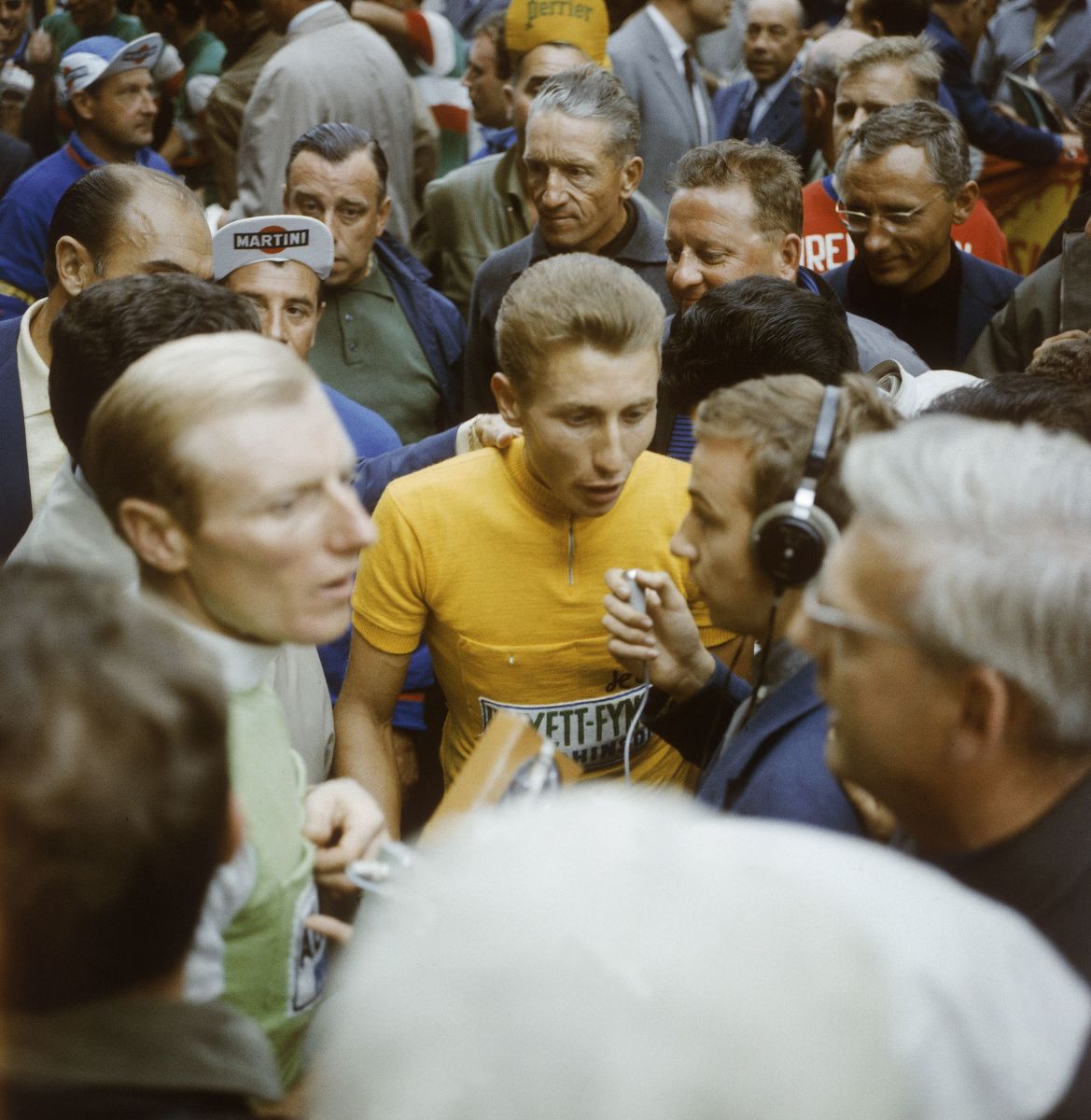
The French cyclist Jacques Anquetil, winner of the Tour de France, upon his crossing the finishing line at the Parc des Princes on July 16, 1961.
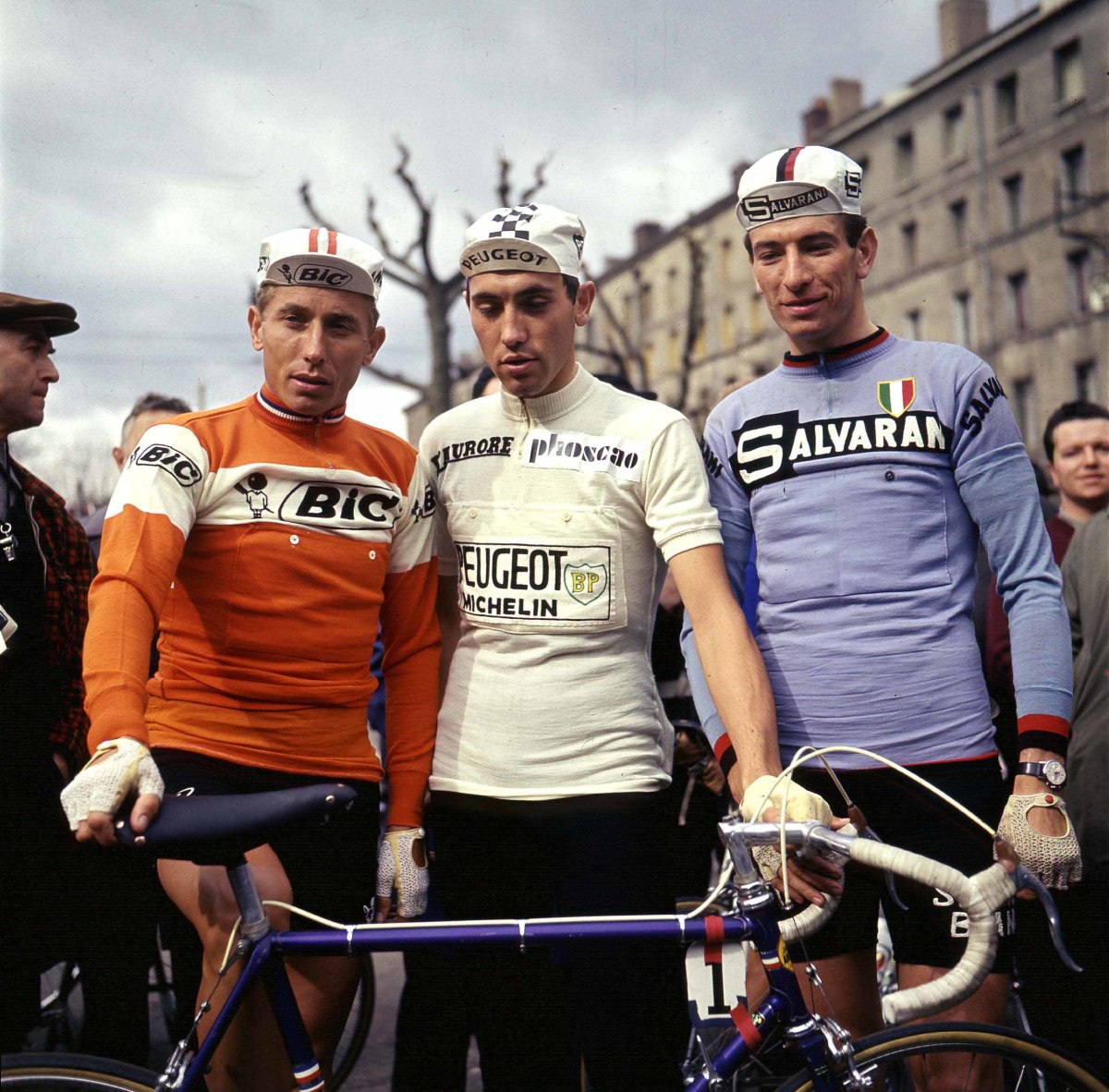
Cyclists Jacques Anquetil, Eddy Merckx and Felice Gimondi were the three winners of the Tour de France in 1970.
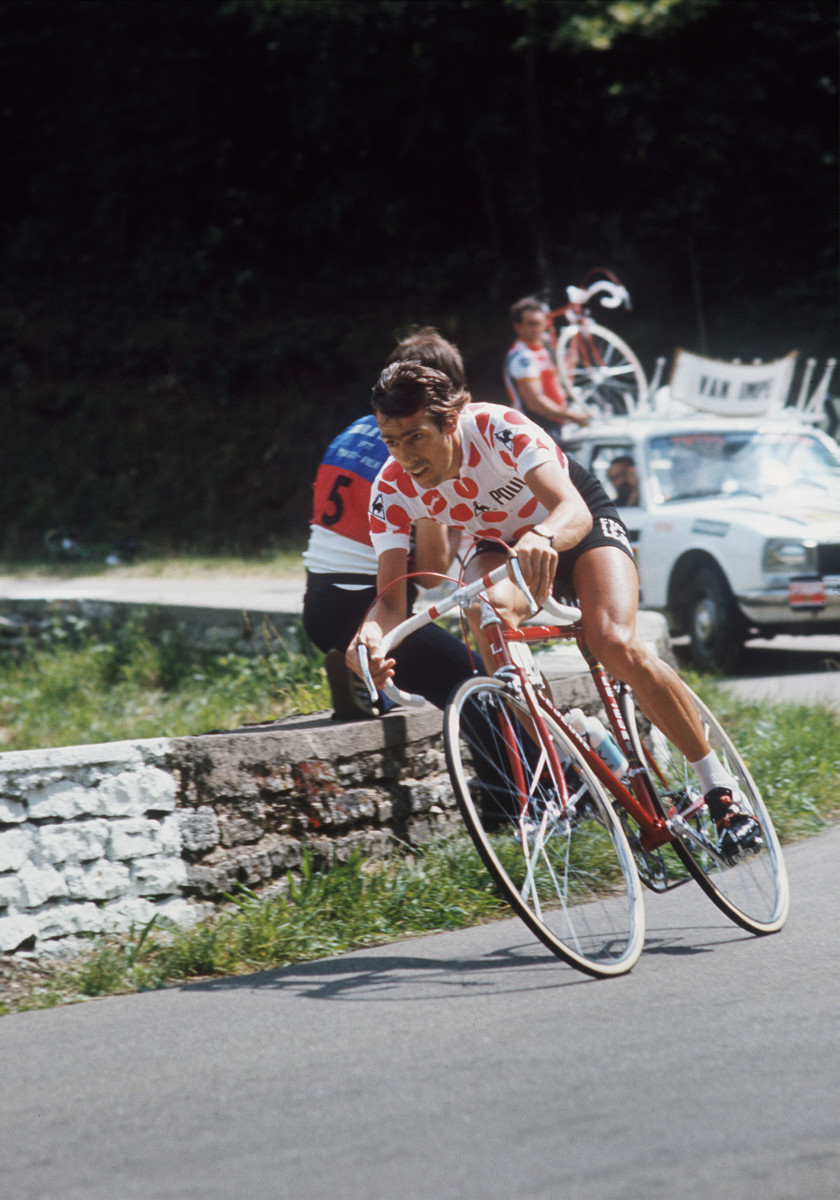
Lucien Van Impe from Belgium, wearing the red and white Polka Dot Jersey of the best climber, rides during the 64th Tour de France in July 1977.
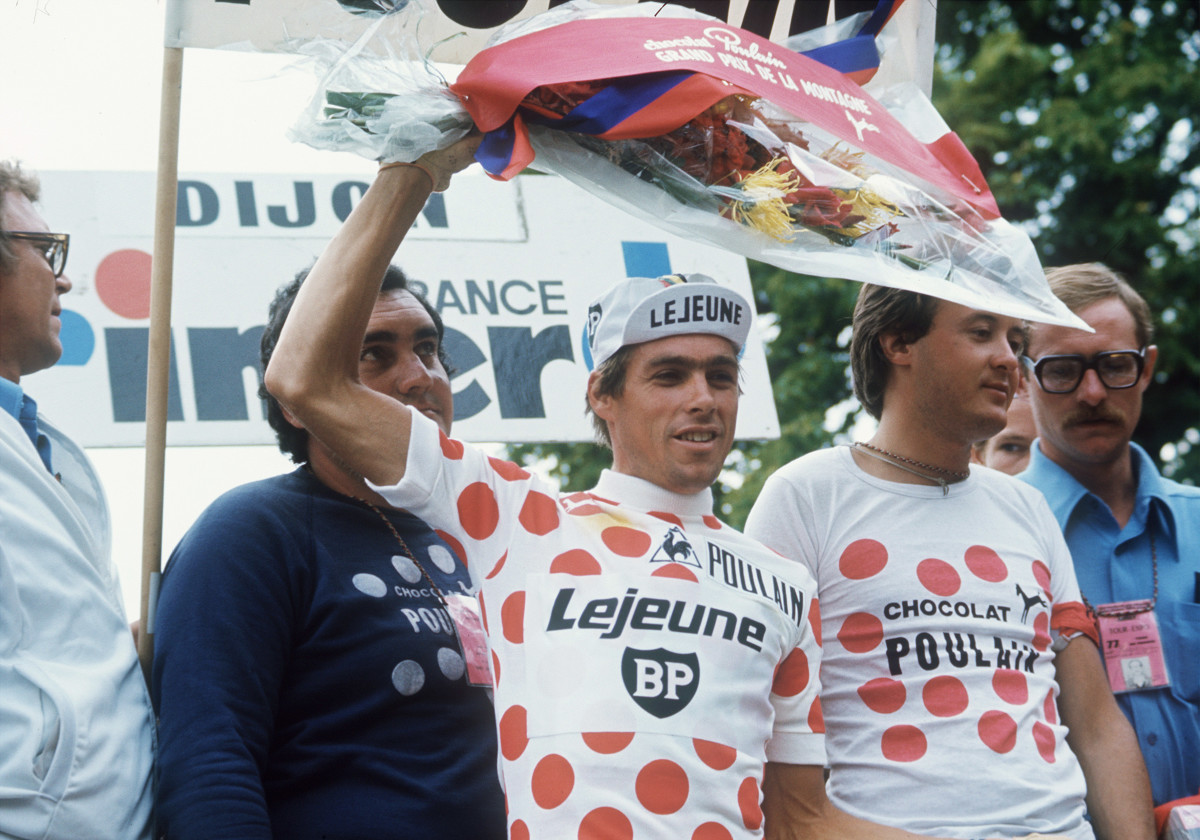
Lucien Van Impe from Belgium waves from podium during the 64th Tour de France between June 30 and July 27, 1977. Van Impe finished third placed in the overall ranking.
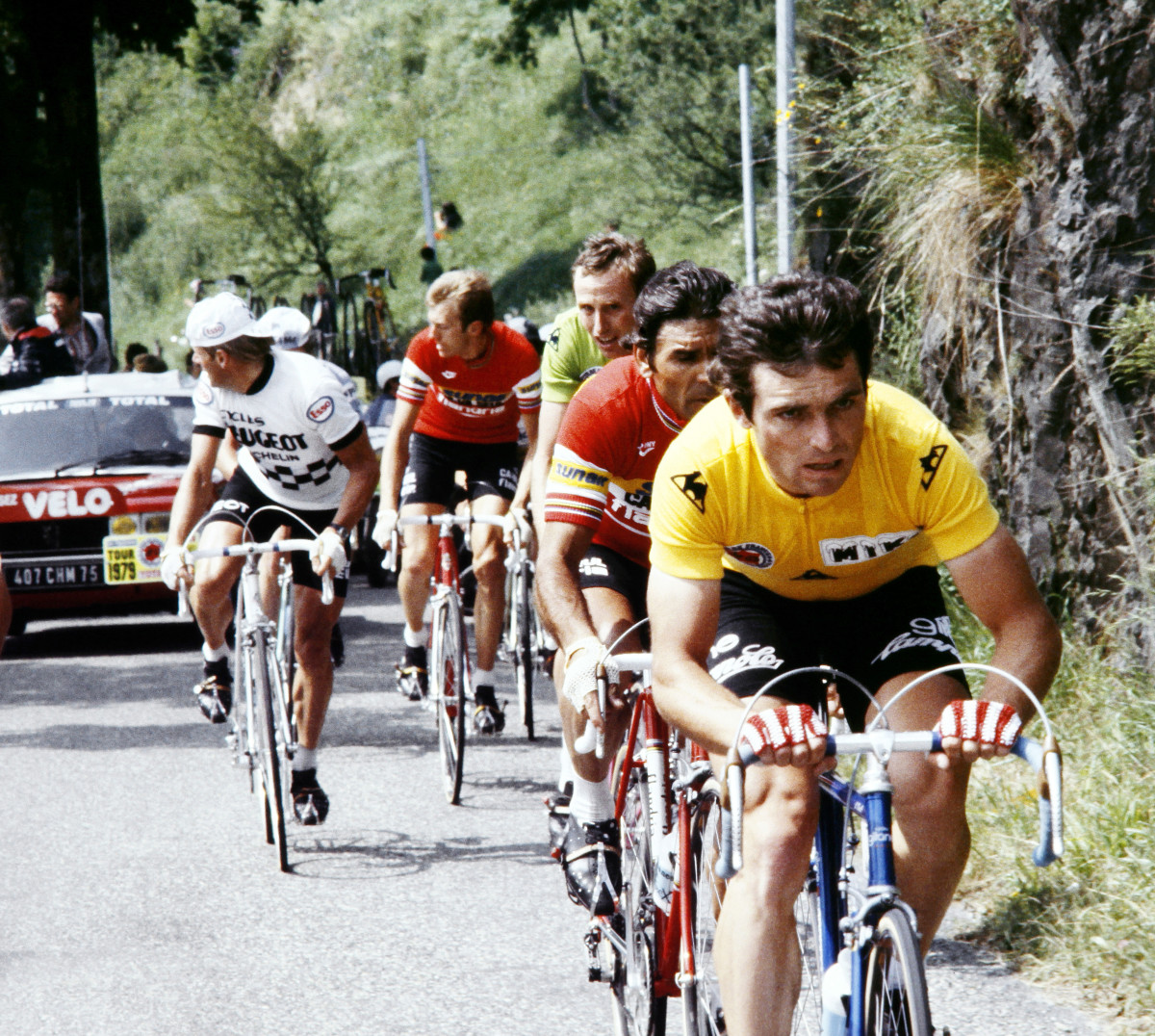
Frenchman Bernard Hinault leads in front of Portuguese Joaquim Agostinho, Dutchmen Joop Zoetemelk and Hennie Kuiper (left) and Swedish Sven-Ake Nilsson during the third stage of the Tour de France between Luchon and Pau on June 30, 1979. Hinault won the stage in a sprint finish beating Belgian Rudy Pevenage and Italian Gian-Battista Barronchelli and went on to capture his second consecutive Tour de France's victory in Paris, winning seven stages overall.
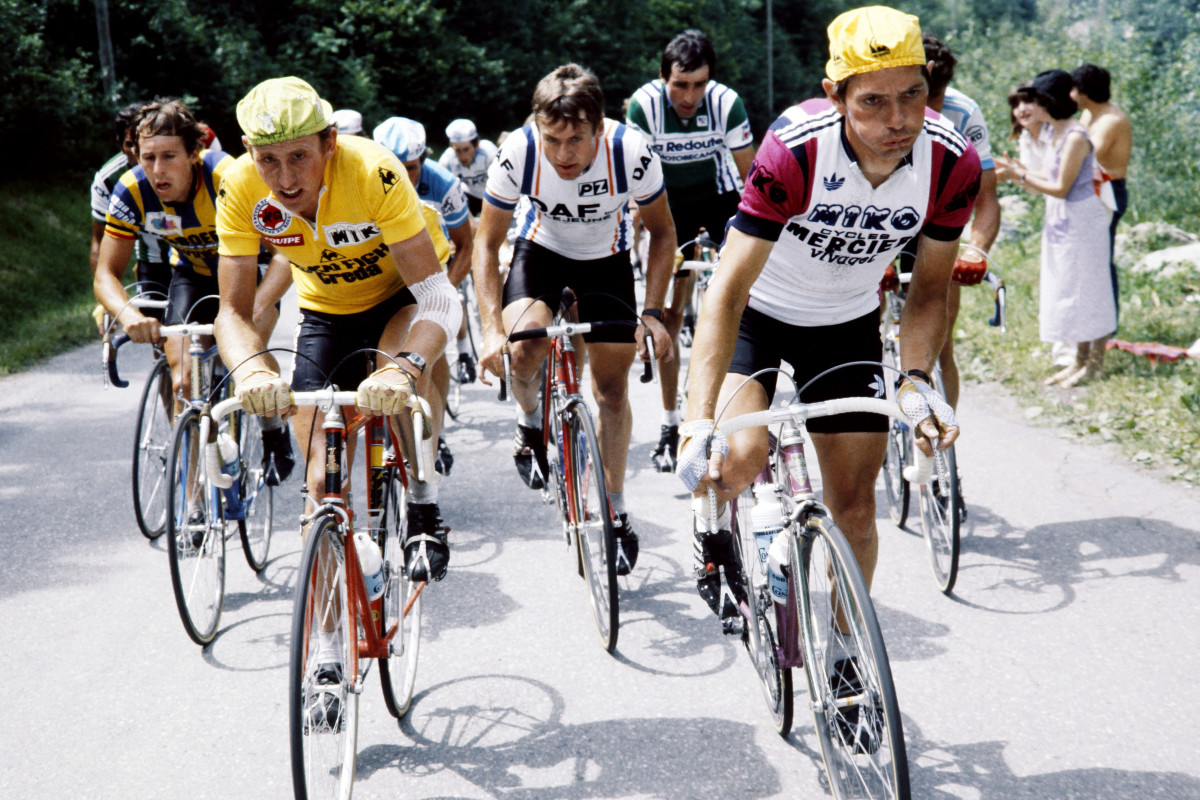
Dutchman Joop Zoetemelk, wearing the leader's yellow jersey, rides uphill next to Frenchman Raymond Martin during the 17th stage of the Tour de France between Serre-Chevalier and Morzine on July 14, 1980. Zoetemelk finished 13th of the stage won by Frenchman Mariano Martinez but went on to win his first and only Tour de France in Paris.
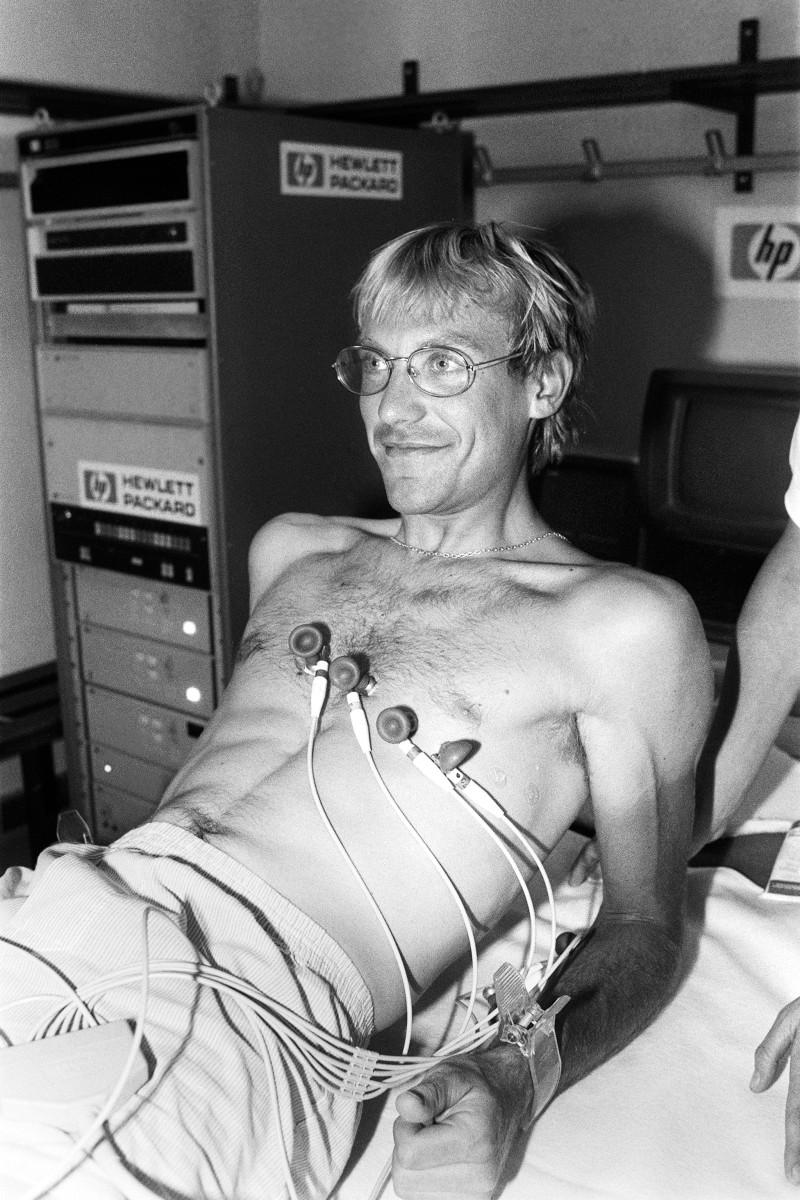
French cyclist Laurent Fignon undergoes a medical exam before the start of the Tour de France cycling road race on June 27, 1984 in Bobigny. Fignon revealed on June 11, 2009, during the recording of a TV show that he suffers advanced stage cancer, but said that there he has no links with doping products. Fignon won the Tour de France in 1983 and 1984.
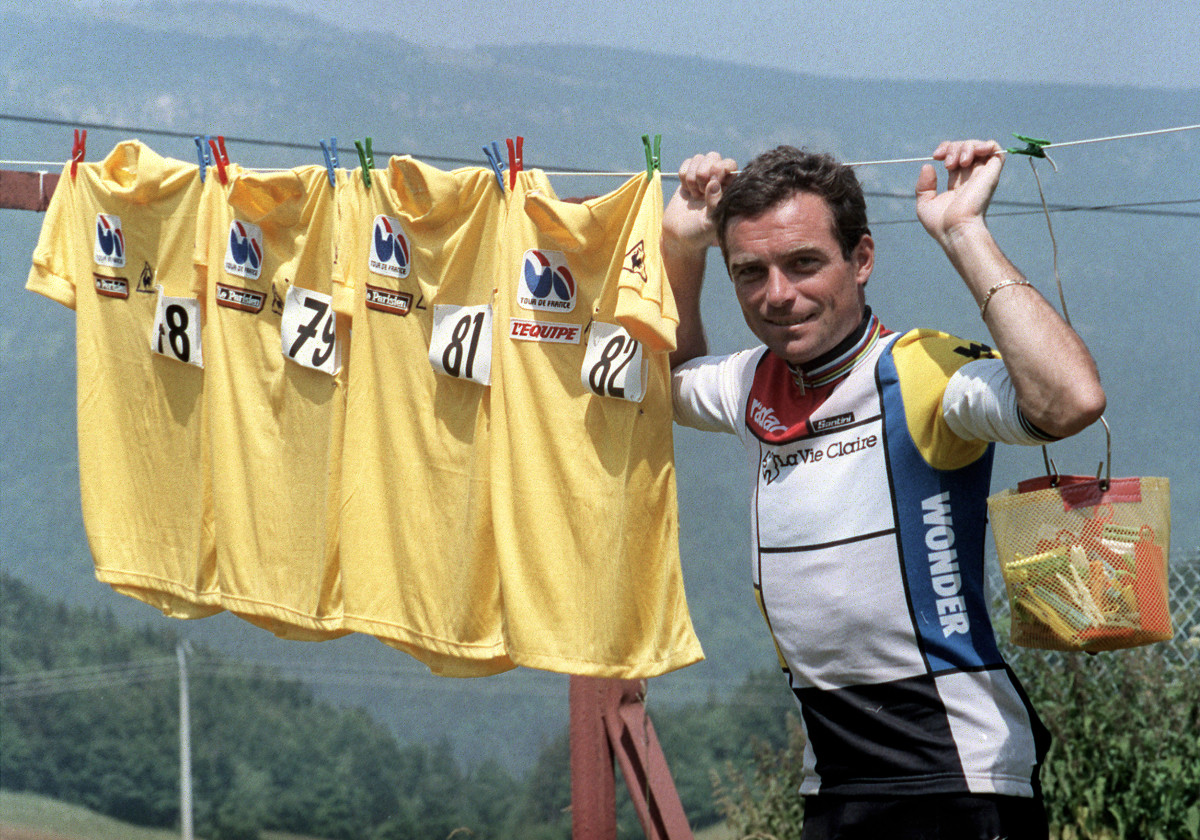
During a day-off on July 12, 1985 in Villard-de-Lans, Frenchman Bernard Hinault, the overall leader of the 72nd Tour de France, displays his four yellow jerseys won in previous years (1978, 1979, 1981, 1982). Hinault won the 1985 edition as well to tie the record set by his compatriot Jacques Anquetil and Belgian rider Eddy Merckx.
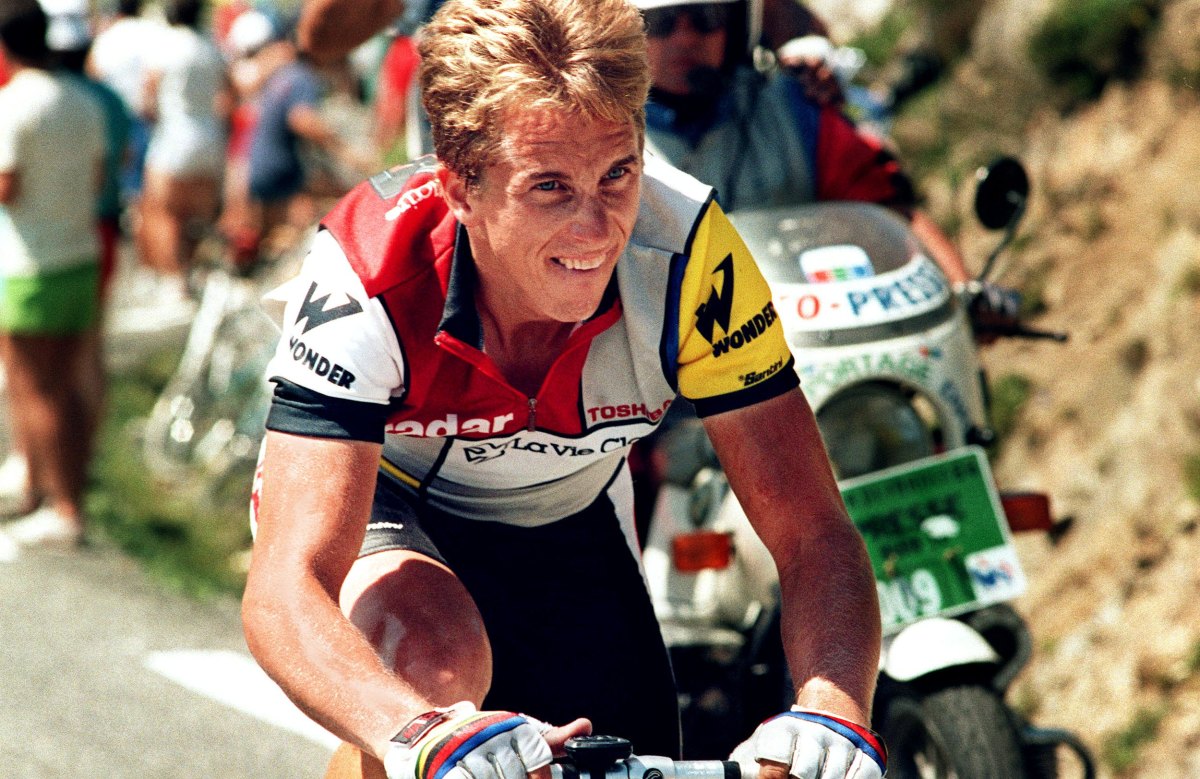
The American cyclist Greg Lemond rides in the Tour de France on July 16, 1986.
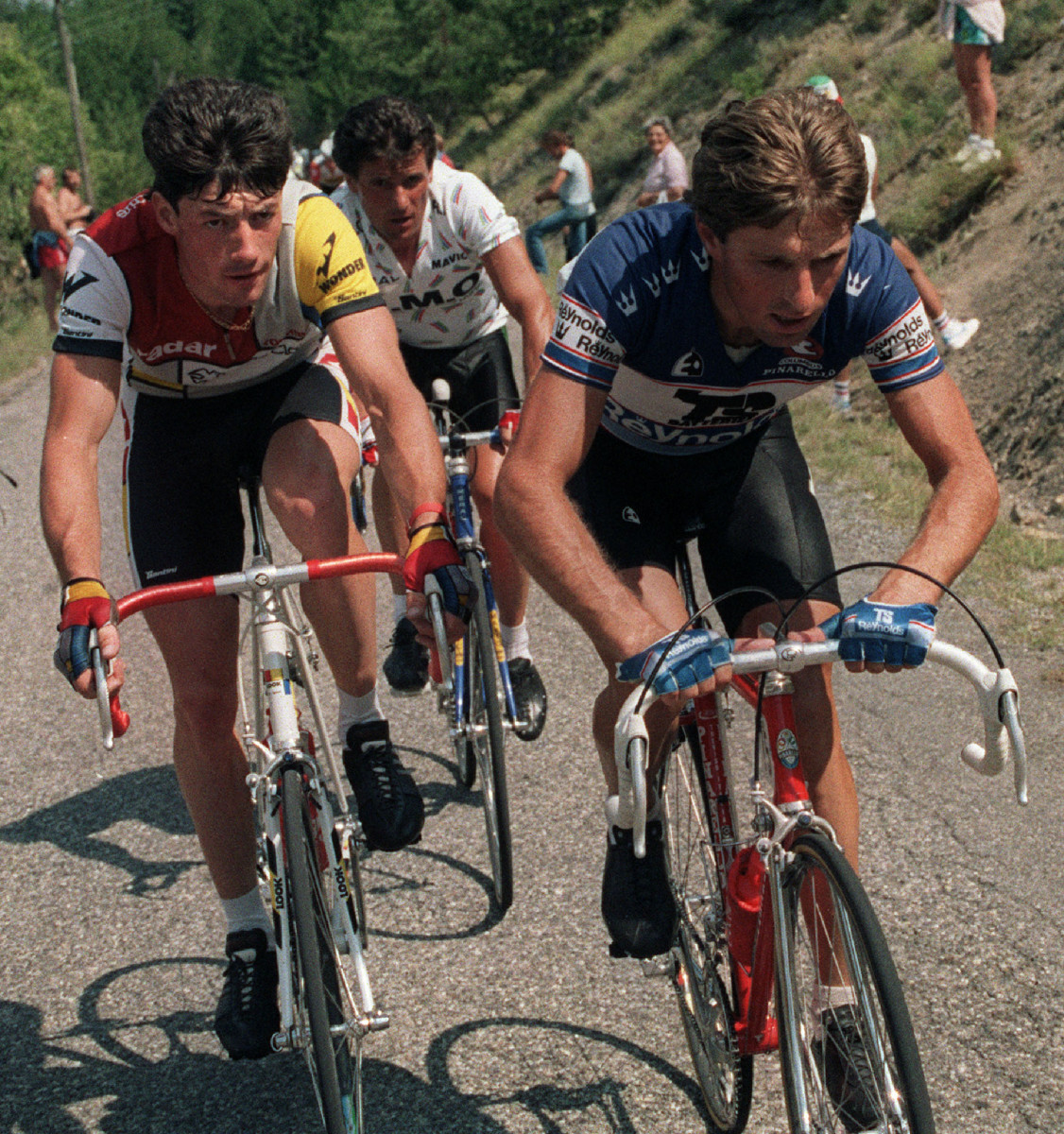
Spanish Julian Gorospe (right) leads a final breakaway from Nimes to Gap in the 73rd Tour de France, with French Jean-FranÁois Bernard (left) and French Bernard Vallet (center).
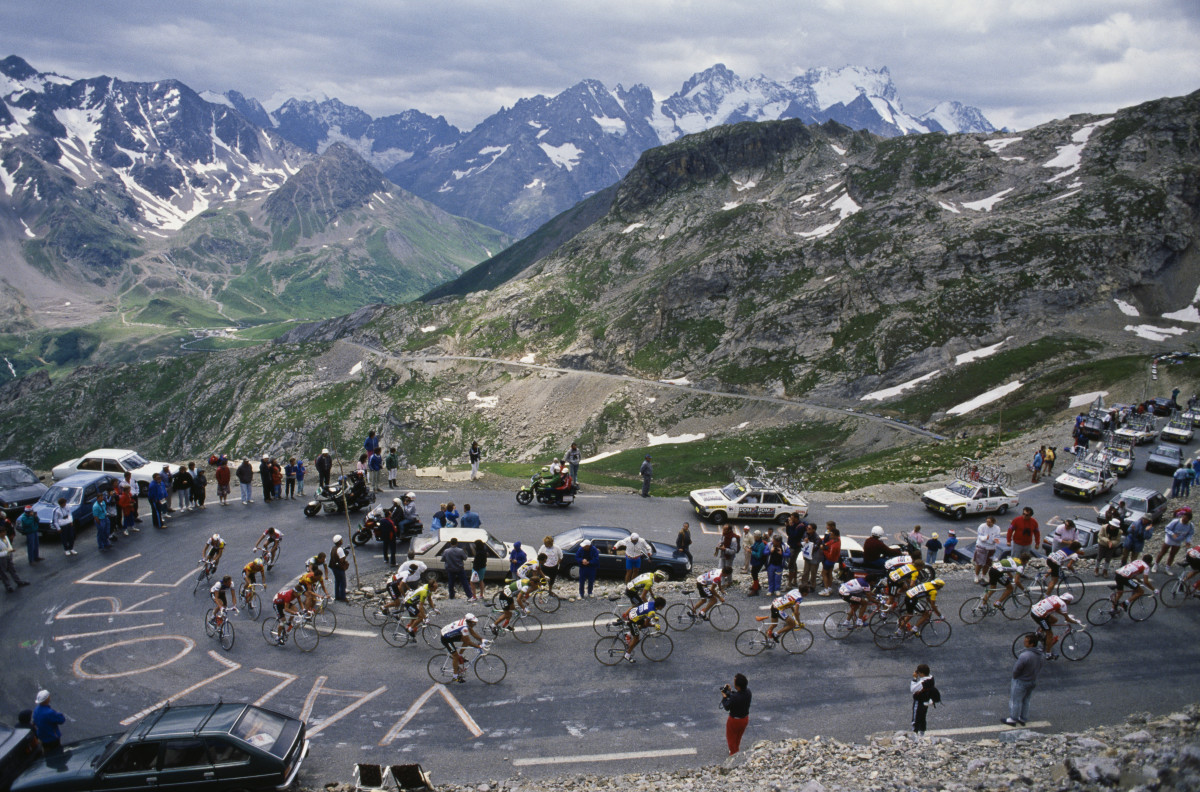
The riders reach the top of the Col du Galibier in France, between Le Bourg-d'Oisans and La Plagne, during Stage 21 of the Tour de France in July 1987.
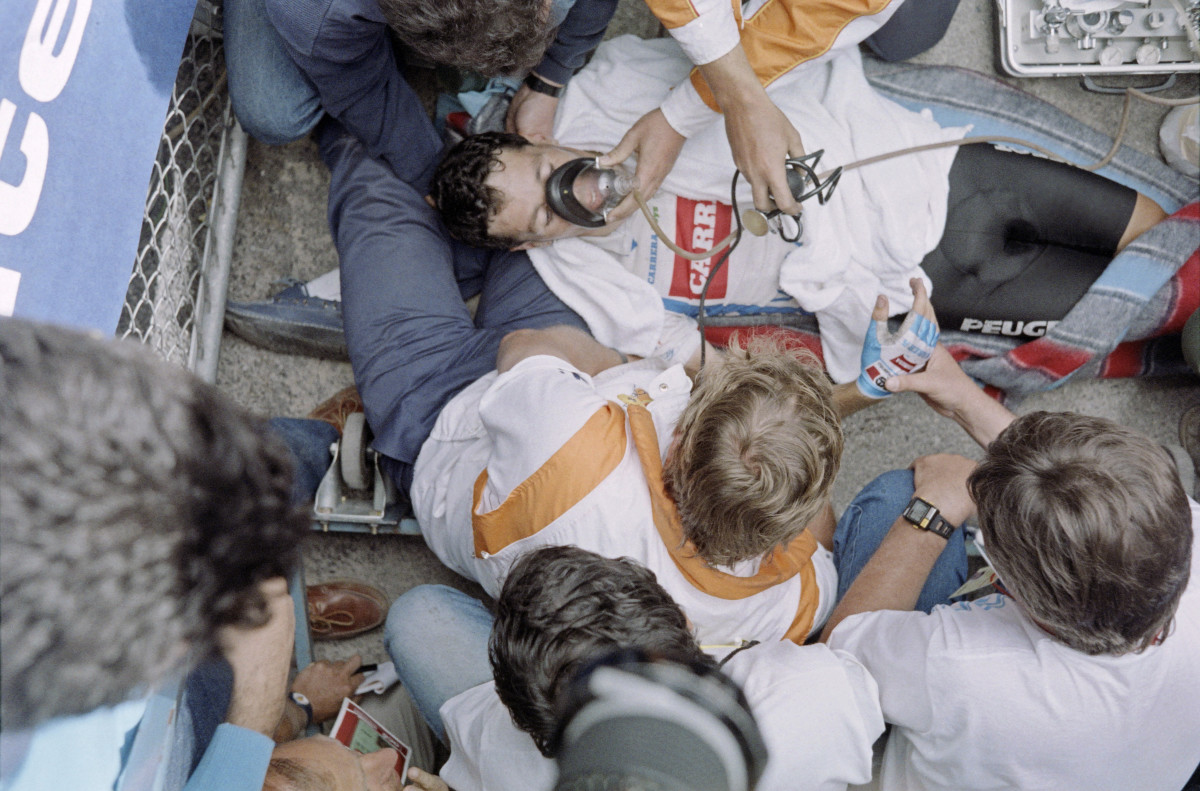
French cyclist Stephen Roche is rescued after fainting, on July 22, 1987 at the arrival of the 21st stage of the Tour de France between Bourg d'Oisans and La Plagne.
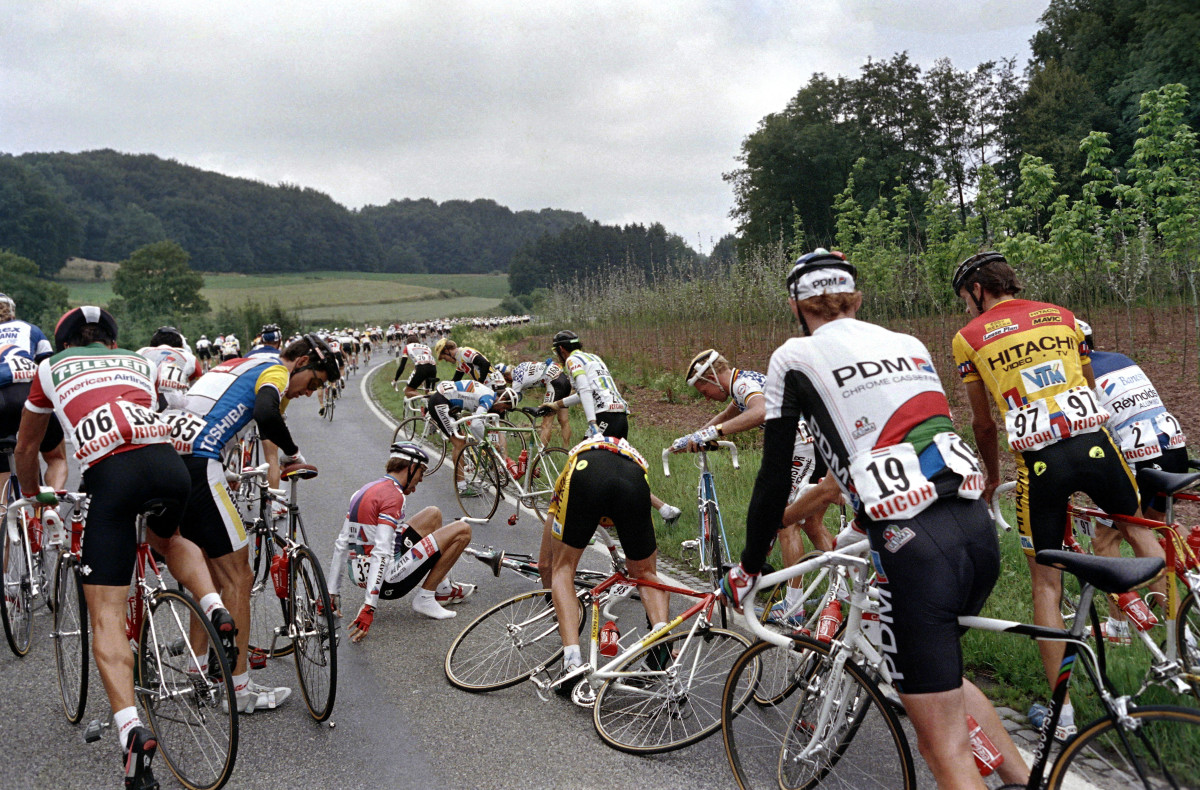
A group of cyclists recover after a fall during the third stage of Tour de France in Francorchamps, Belgium on July 3, 1989.
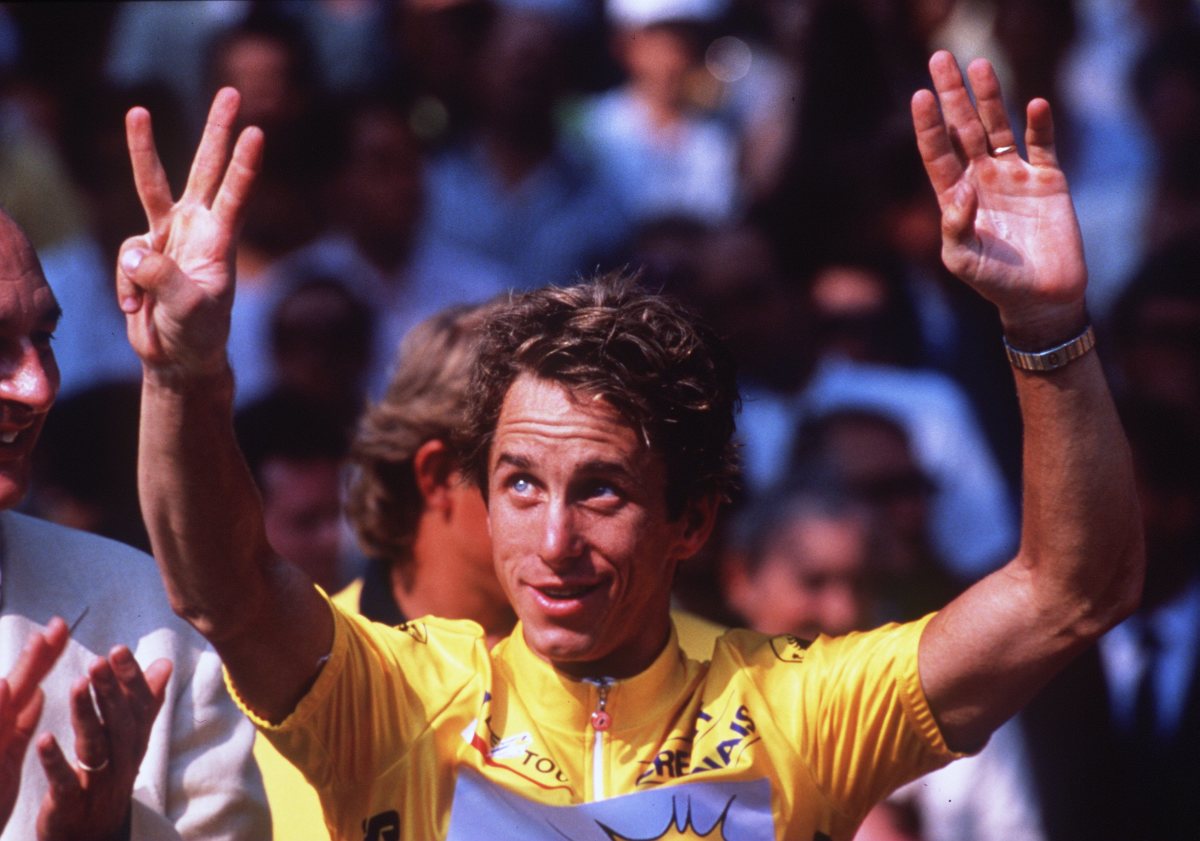
American Greg Lemond celebrates on the podium wearing the yellow jersey after winning the 1990 Tour de France in Paris. It was his third in the Tour de France.
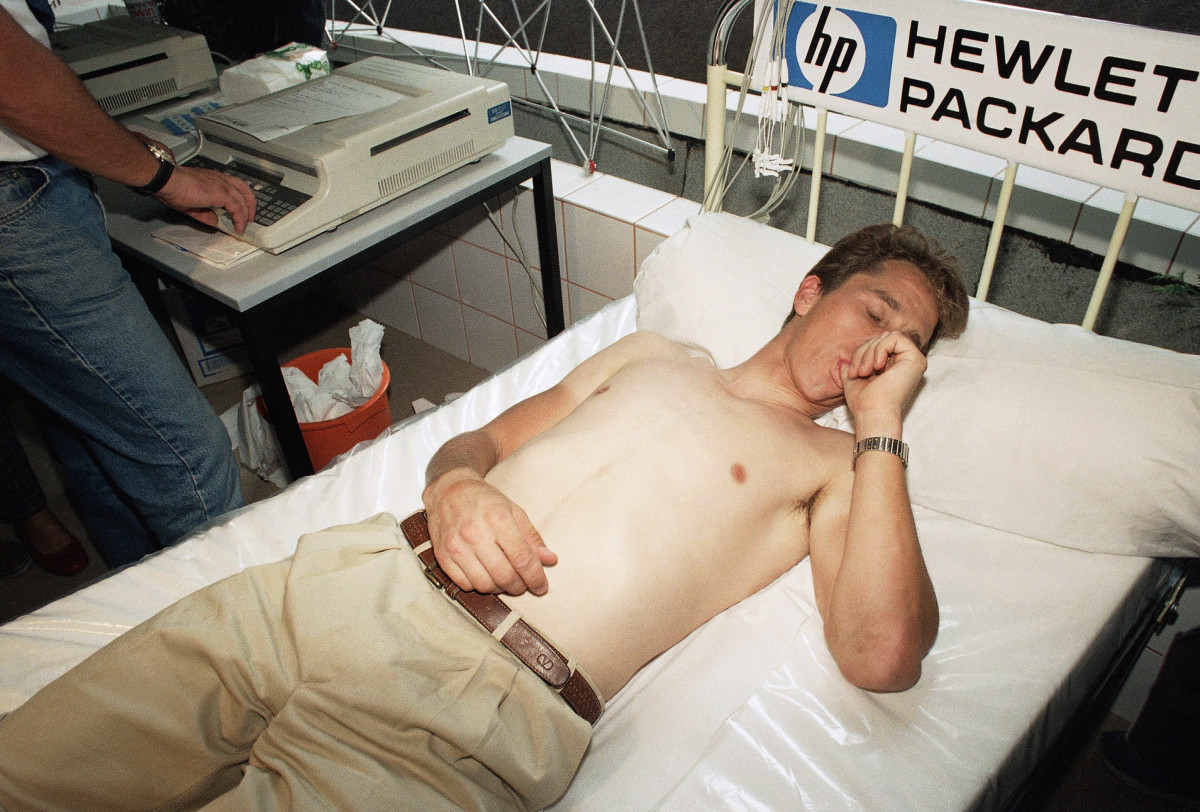
Greg LeMond sucks his thumb like a baby as he waits for the medical examinations on Friday, June 29, 1990, in Poitiers, France.
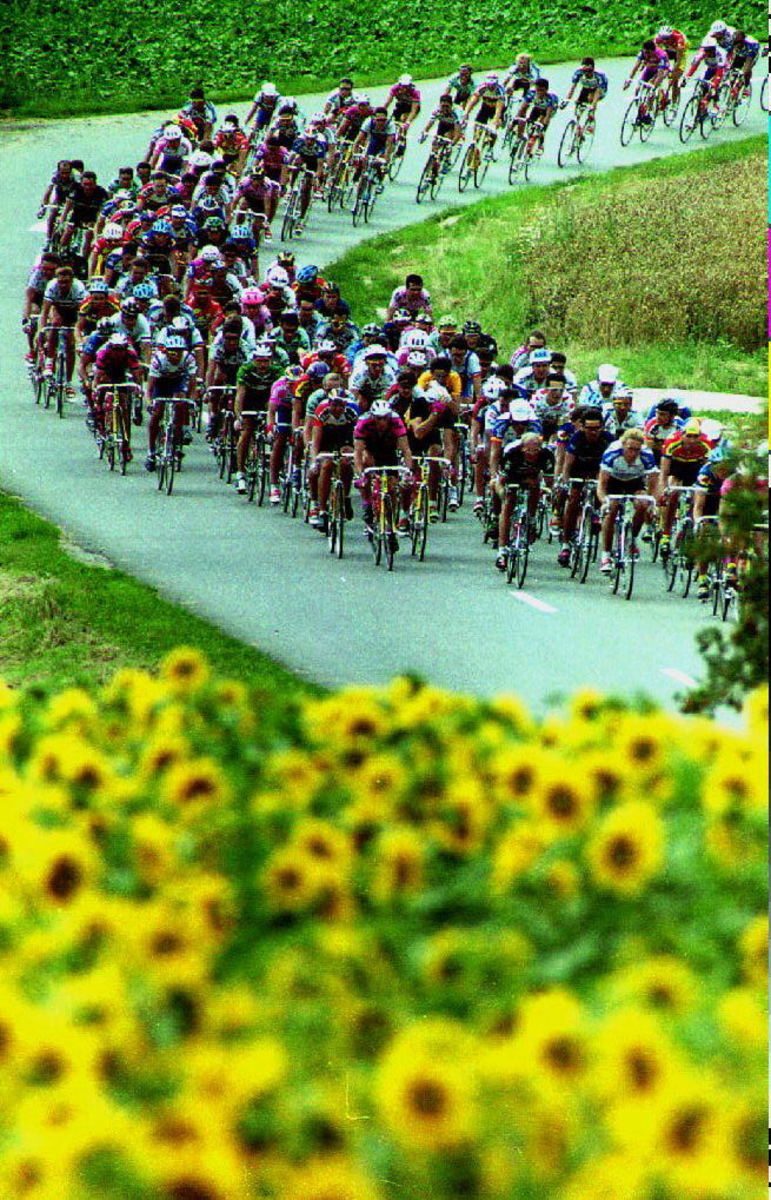
Cyclists pass through the Alsatian countryside in the 10th stage of racing between Luxembourg and Strasbourg in the 79th Tour de France in July 1992.
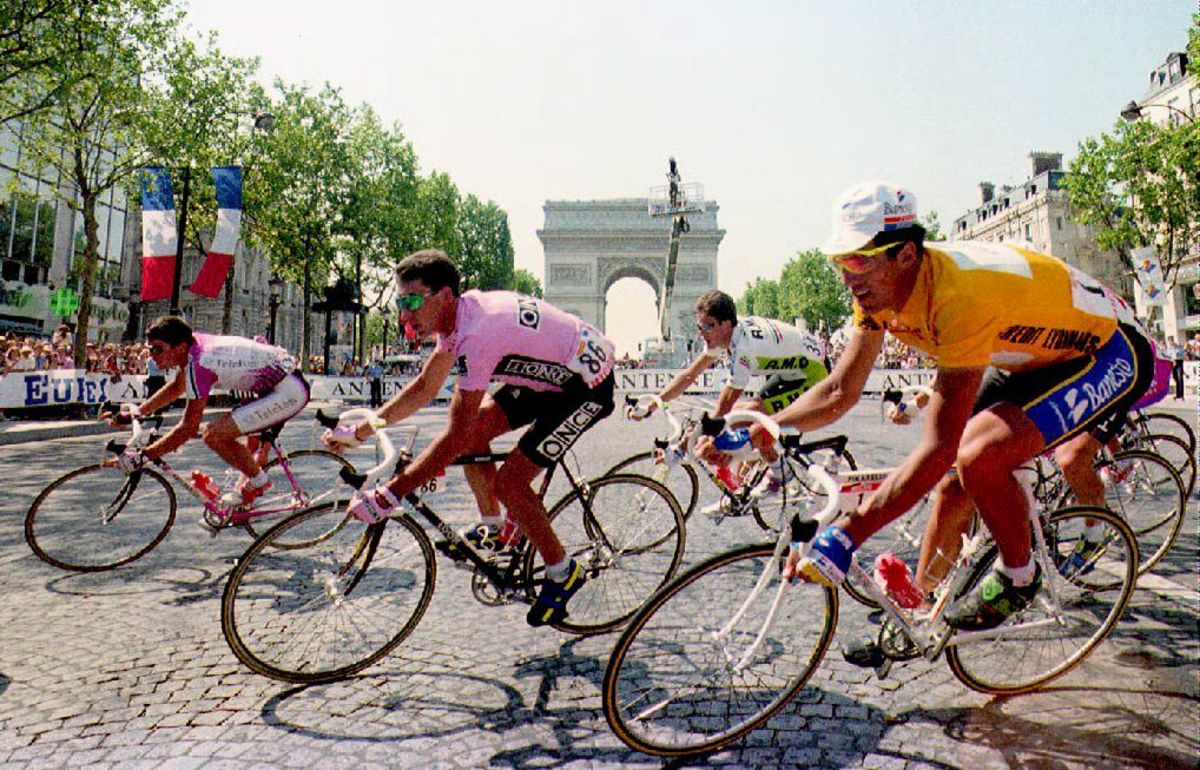
Spanish cycling champion Miguel Indurain (right) takes one of the final turns of the 79th Tour de France on the Champs Elysees in July 1992.
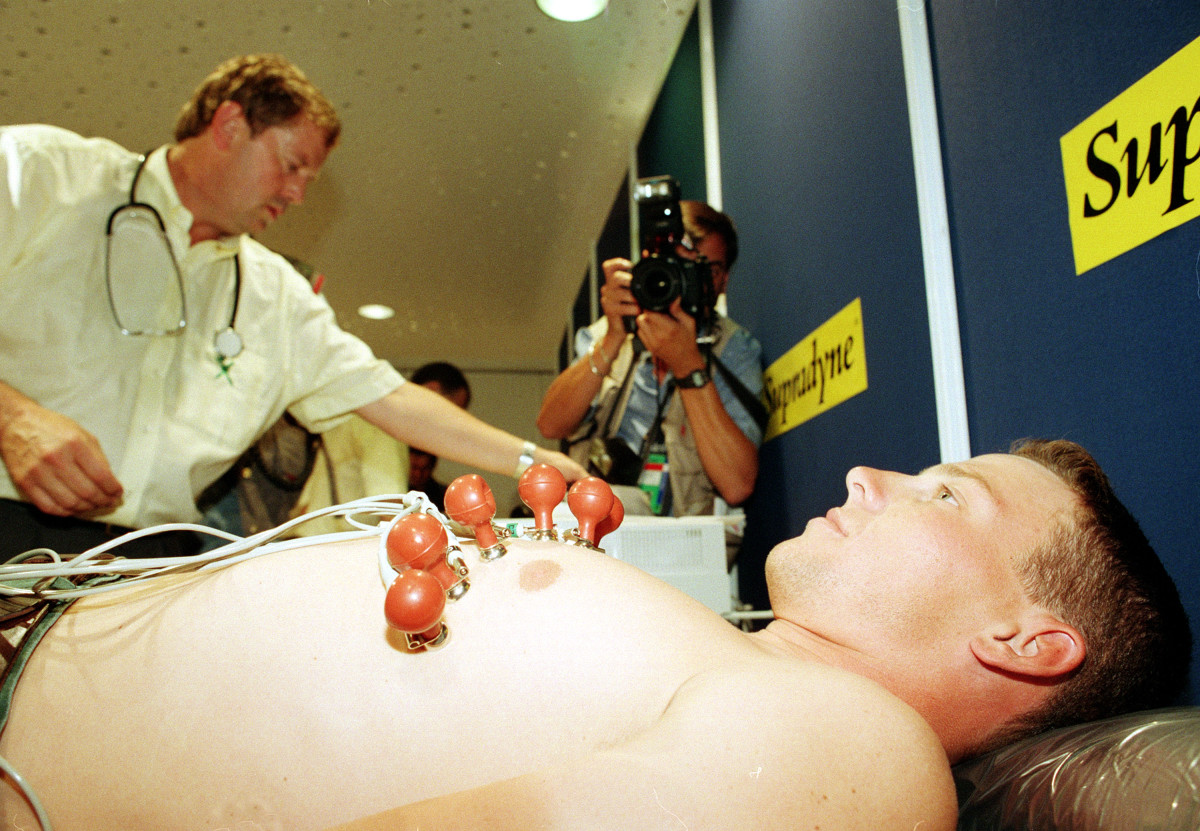
American cyclist Lance Armstrong undergoes a medical examination in Lille, northern France, in June 1994, a few days before the start of the 81st Tour de France cycling race.
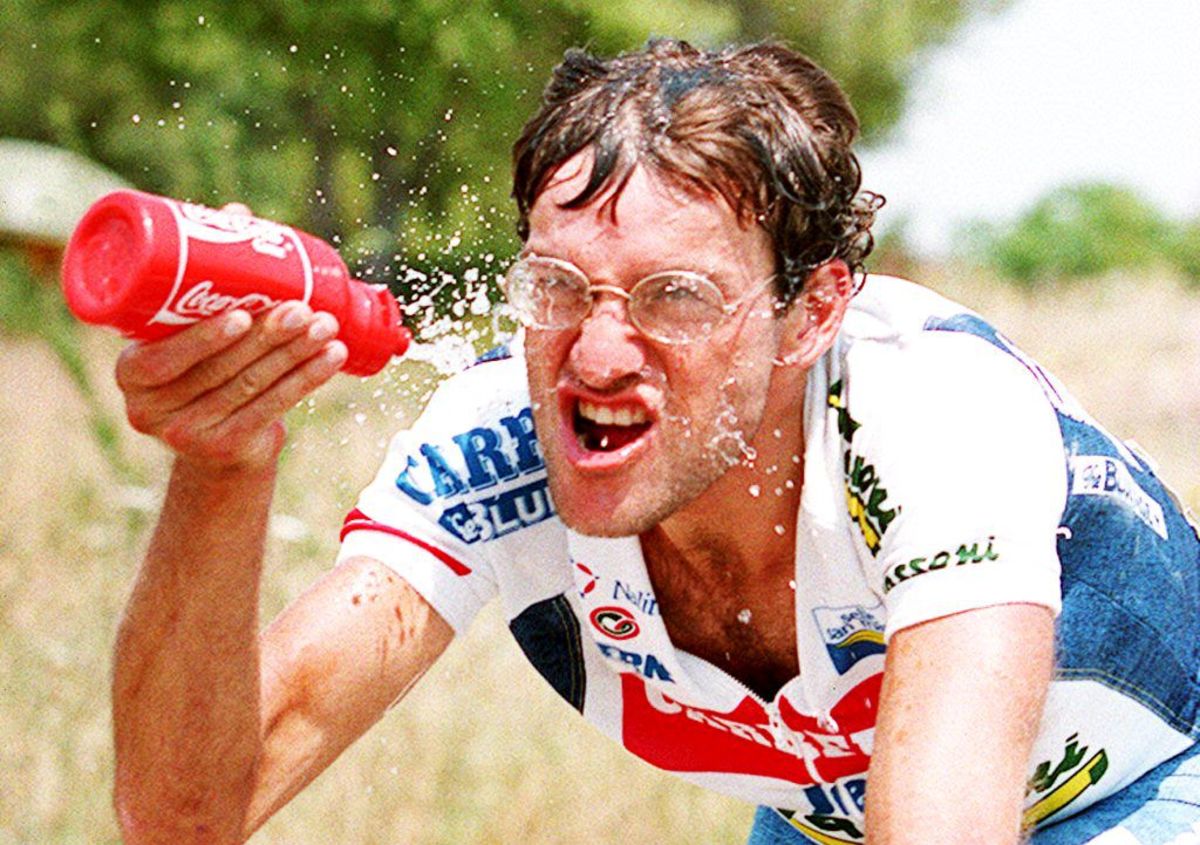
Fabio Roscioli of Italy splashes himself with water during the 12th stage of the Tour de France from Isola 2000 to Marseille in July 1993. Roscioli raced ahead and alone for 112 miles before winning the stage. Miguel Indurain had no problem holding onto the lead even though he finished in the main pack, more than 20 minutes behind Roscioli.
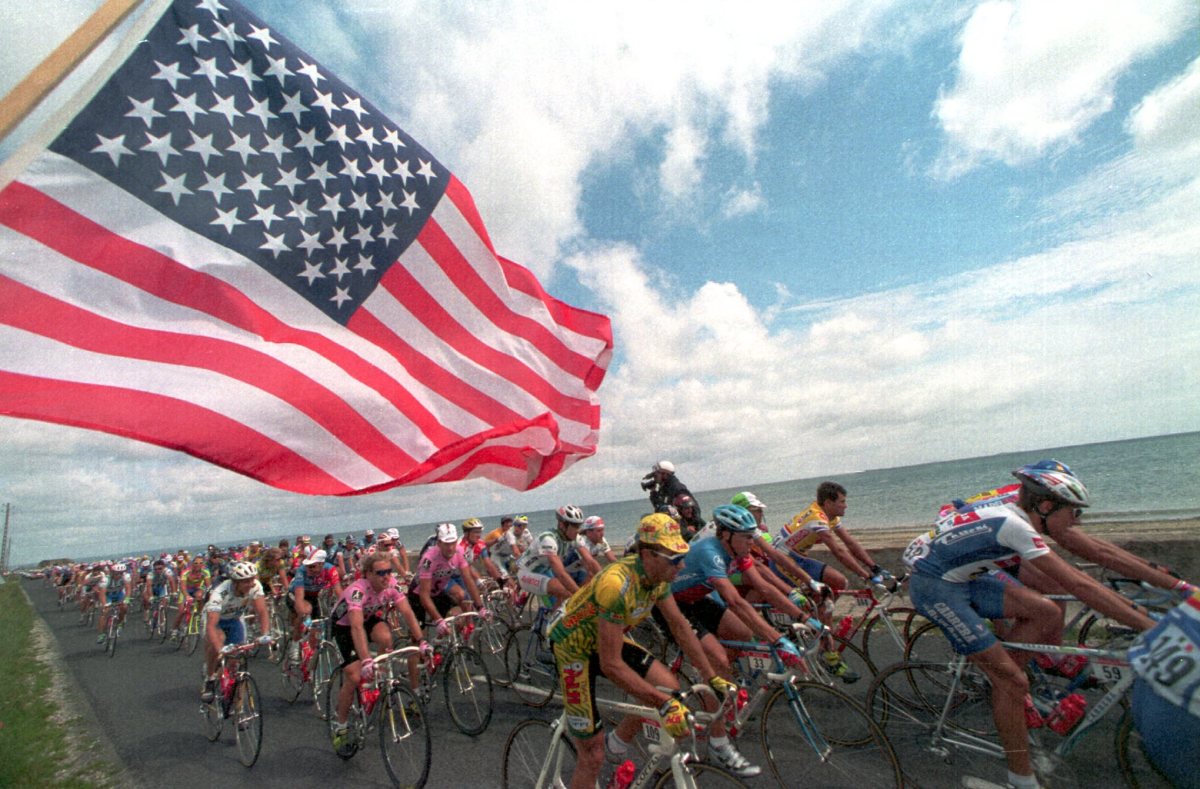
The American flag flutters in the air in the foreground as the pack of riders pass under it on their way up the coast during stage six of the Tour de France in 1994.
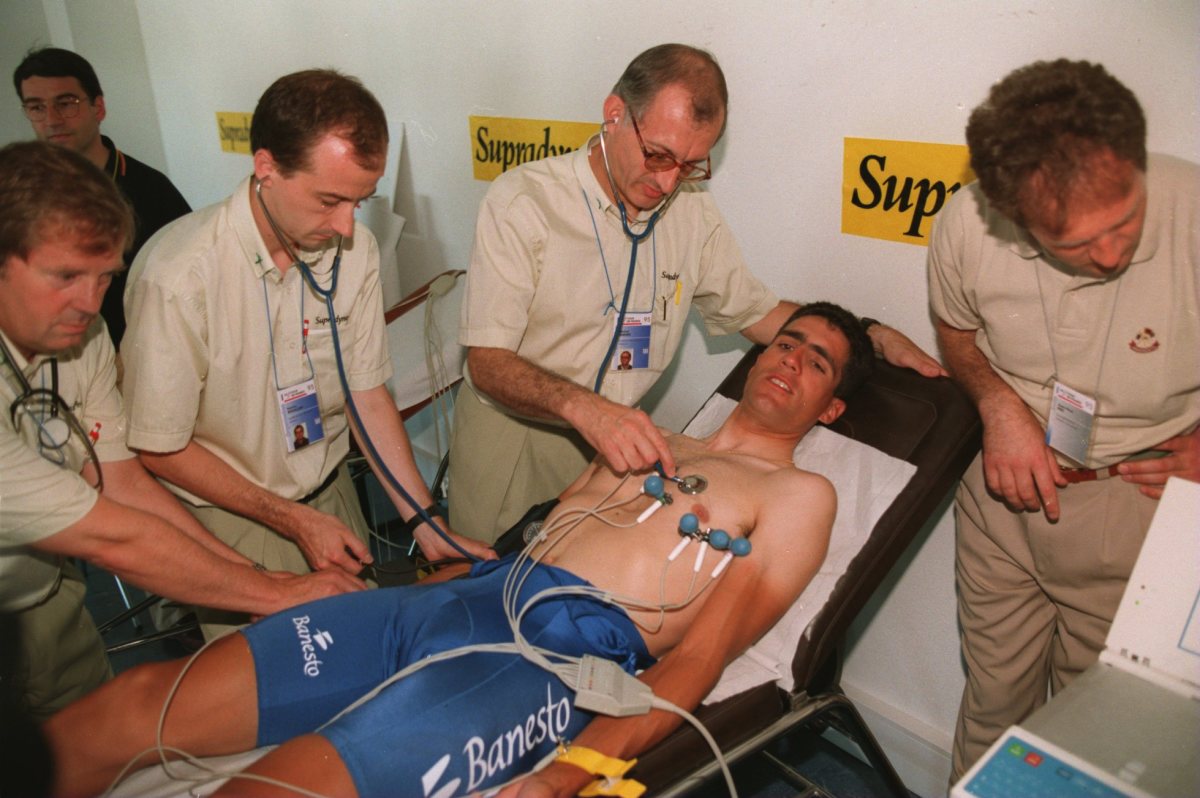
Defending chamption Miguel Indurain of Spain going through medical checkups prior to the start of the Tour de France in 1995.
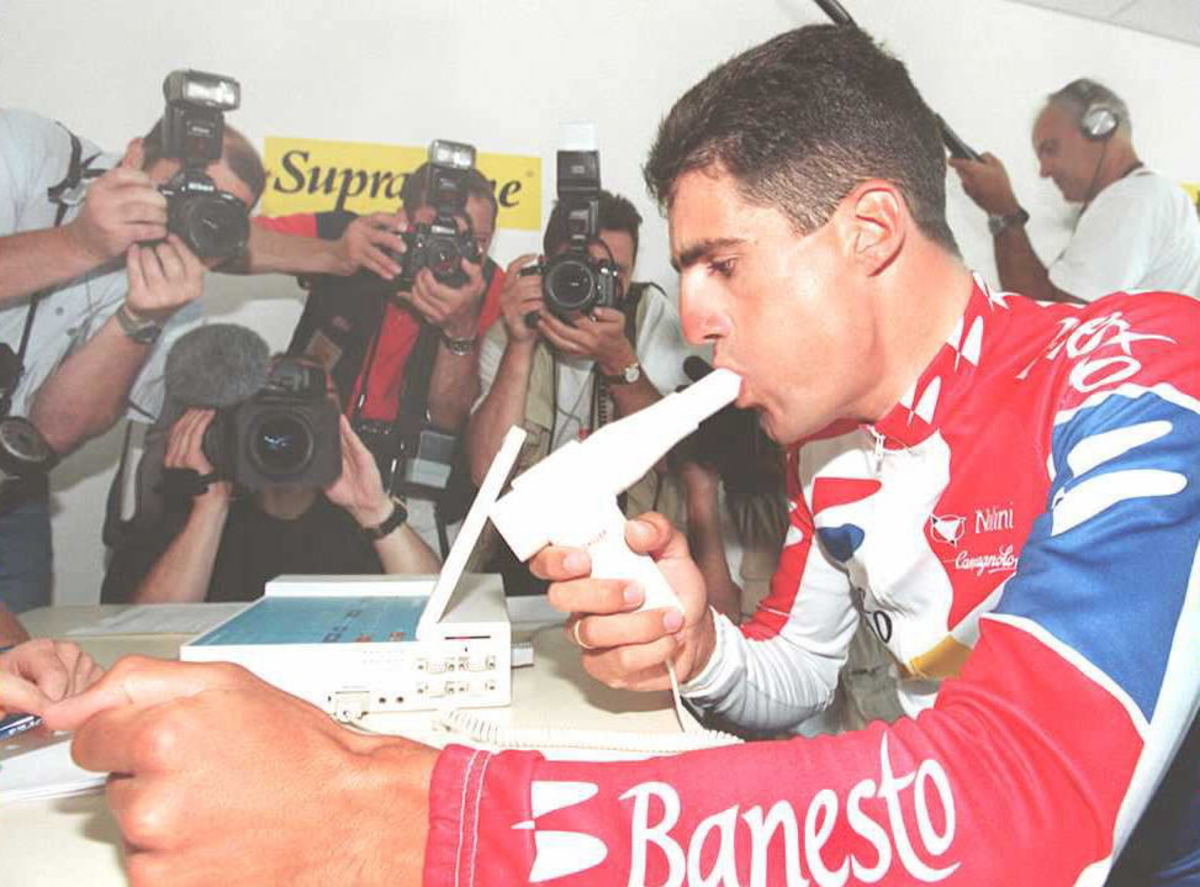
Four-time winner of the Tour de France Miguel Indurain of Spain takes a lung-capacity check-up in Saint-Brieuc, France prior to the start of the 1995 edition of the race.
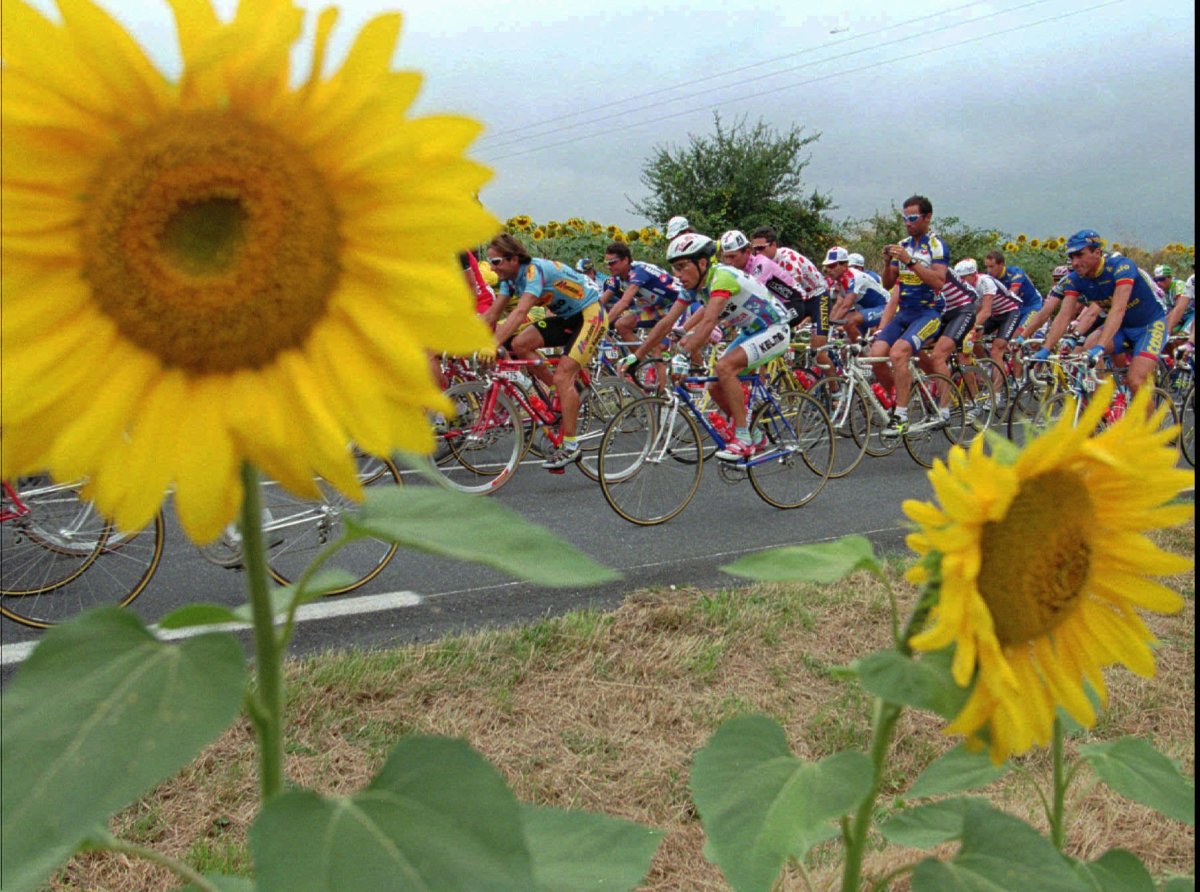
Sunflowers frame cyclists as the pack rides by under cloudy skies during the 14th stage of the Tour de France cycling race in July 1995.
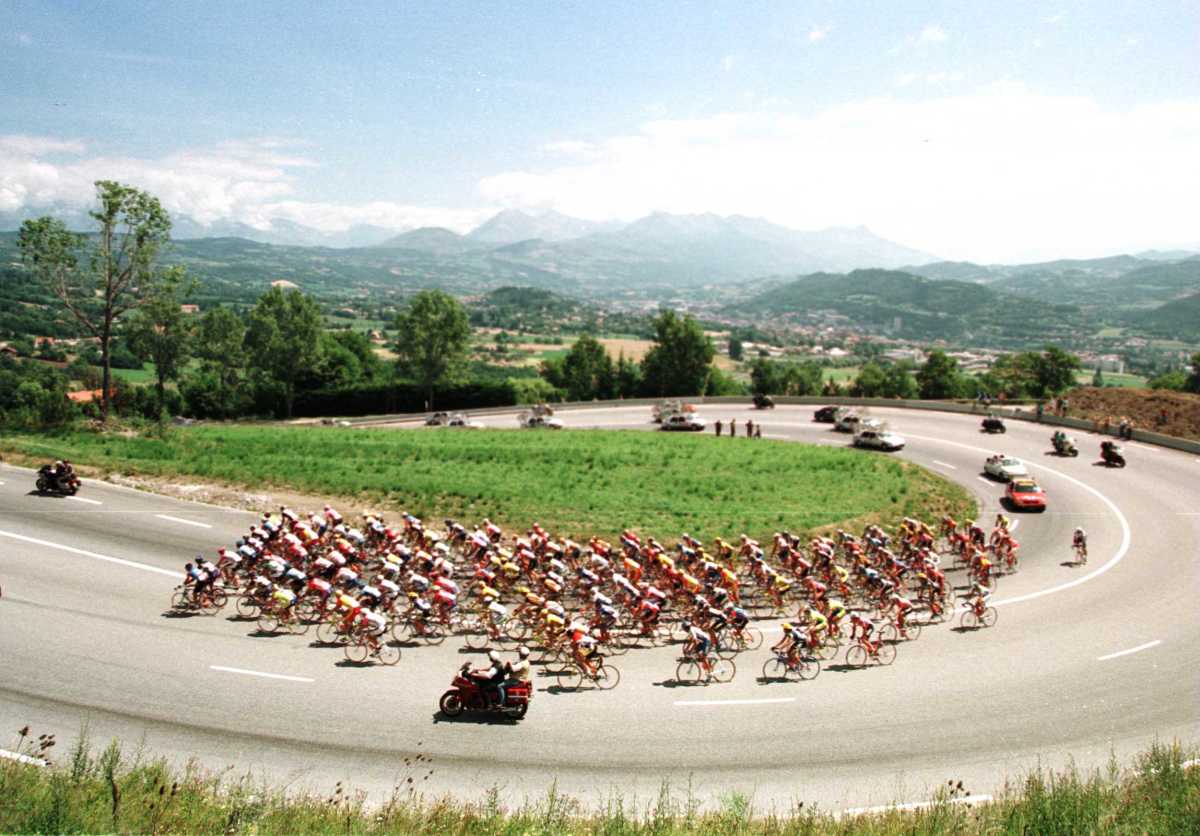
The peleton climbing La Freissinouse leaving the start at Gap on its way on the 11th stage of the Tour De France in 1996.
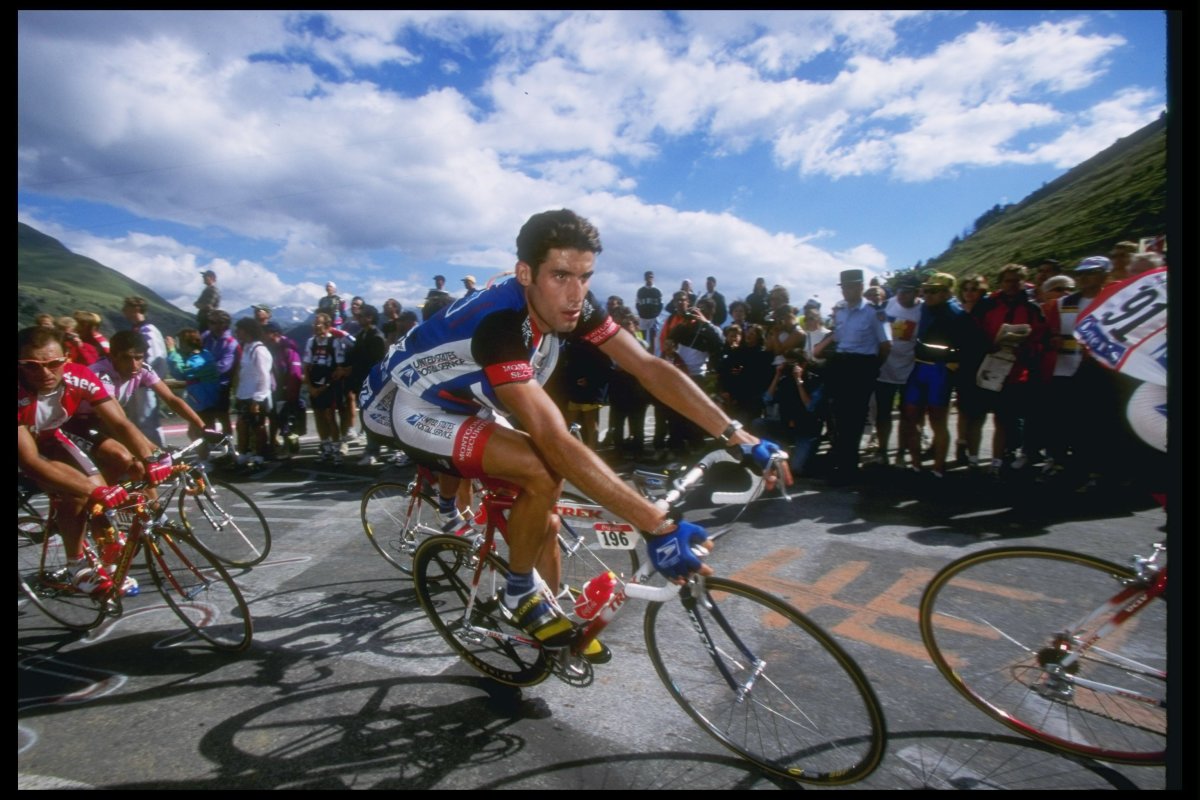
American George Hincapie performs during the 13 stage of the Tour de France in July 1997.
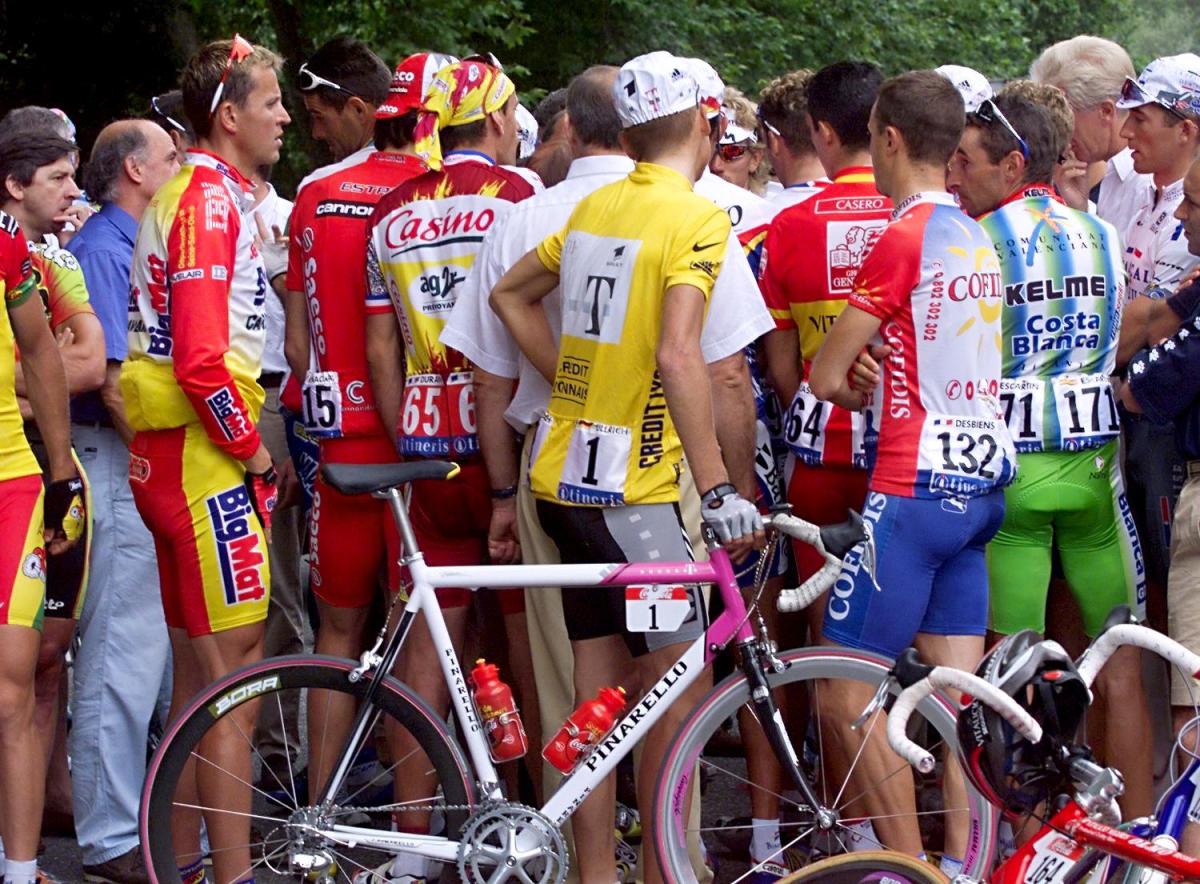
The yellow jersey German Jan Ullrich demonstrates with other cyclists at the beginning of the 12th stage of the Tour de France in Tarascon-sur-Ariege, South of France, in July 1988 to protest against the media coverage of the race focusing on doping affairs.
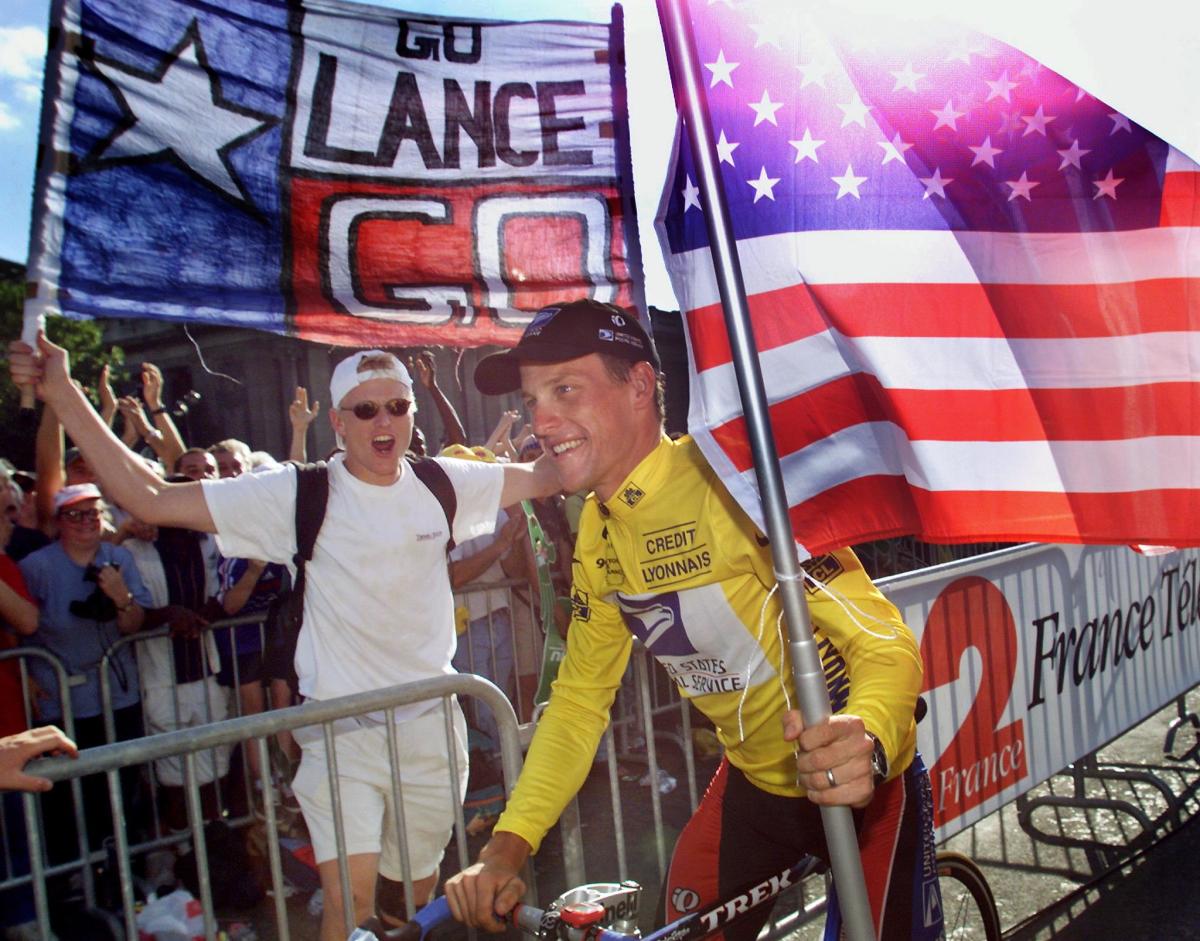
The winner of the 1999 Tour de France American Lance Armstrong is supported by spectators during his victory lap on the Champs-Elysees in Paris in July 1999.
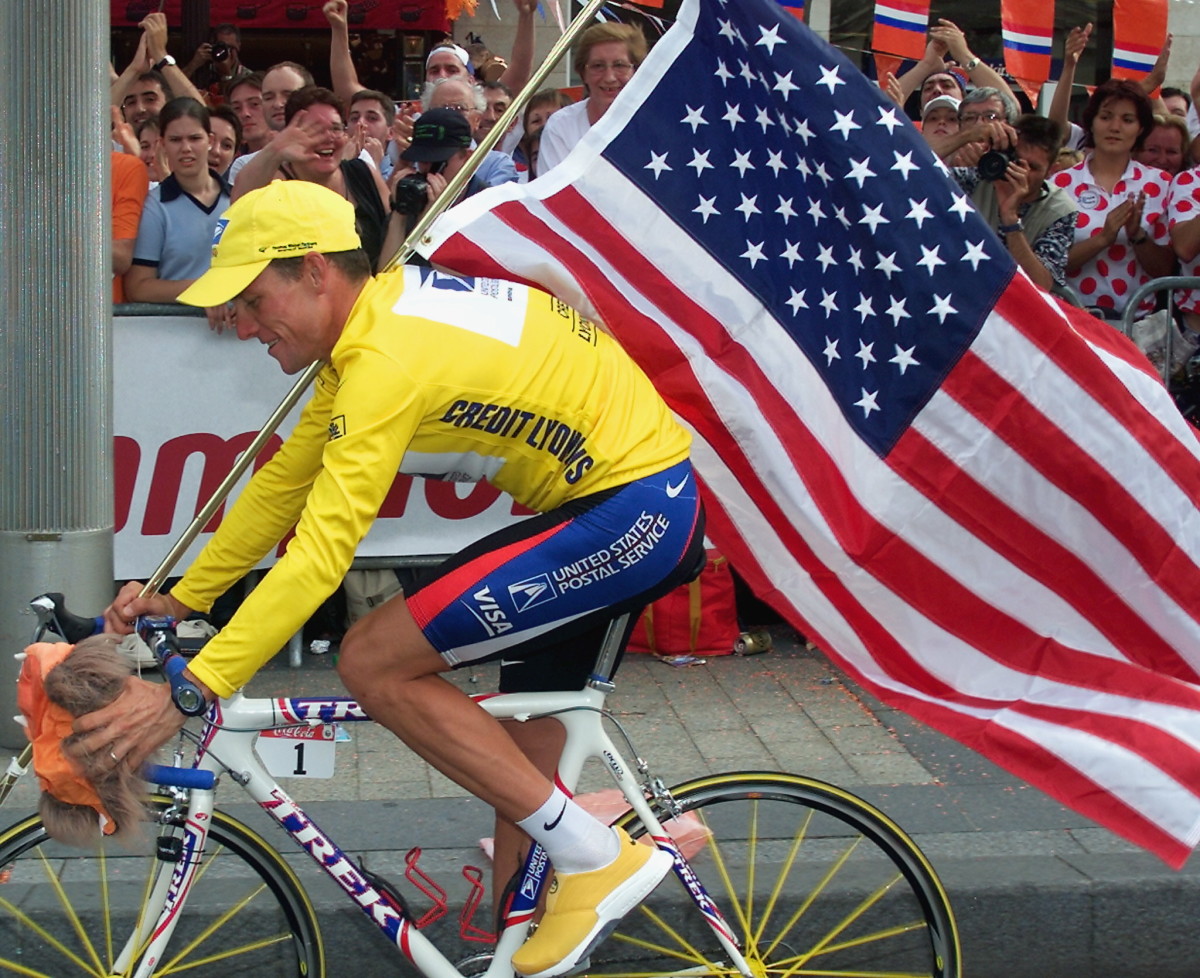
The 2000 Tour de France winner Lance Armstrong is supported by spectators during his victory lap on the Champs-Elysees after the last stage of the 87th French cycling race in July 2000.
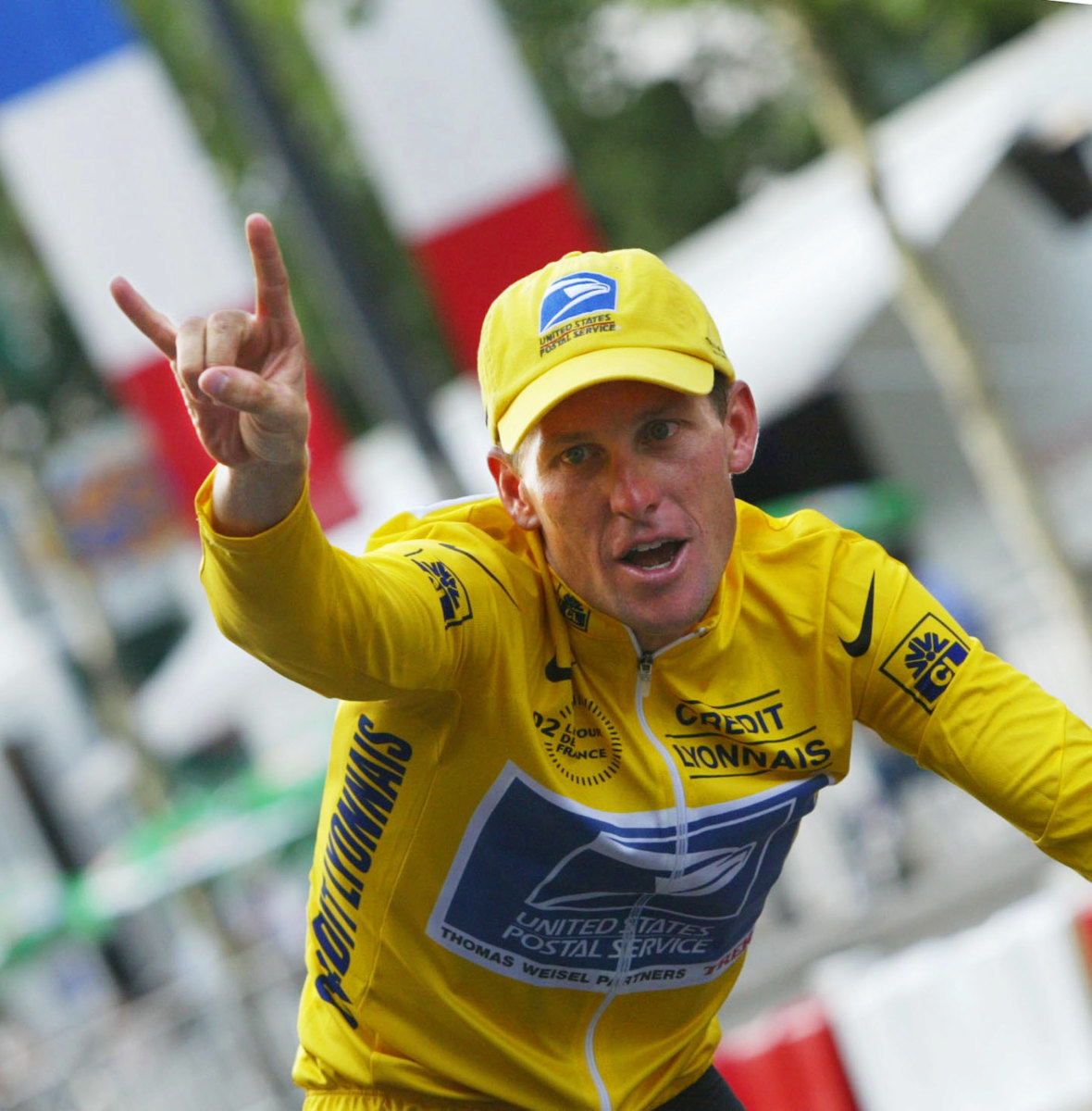
The 2002 Tour de France winner US Lance Armstrong celebrates as he makes his victory lap on the Champs-Elysees after the last stage of the 89th French cycling race in July 2002.
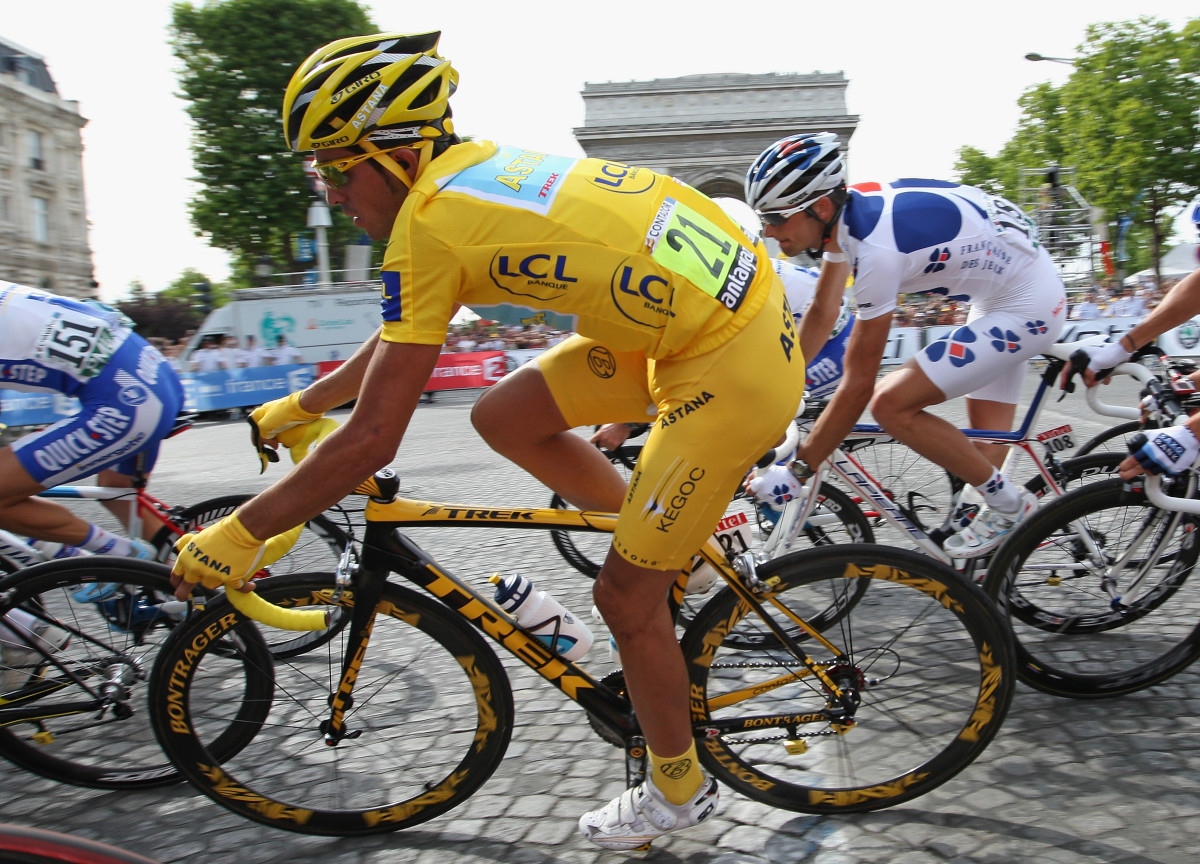
Yellow Jersey holder Alberto Contador of Spain and Astana passes L'Arc de Triomphe during the 21st stage of the Tour de France on July 26, 2009 in Paris, France.
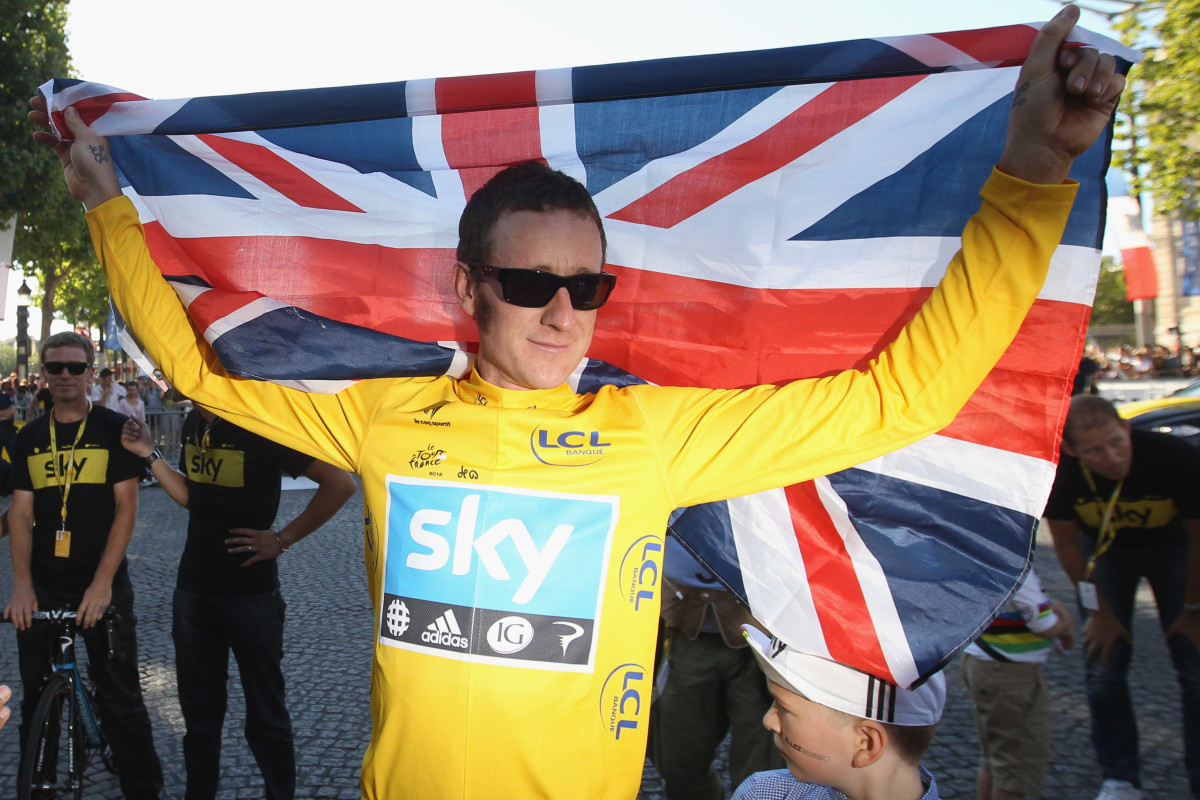
Bradley Wiggins of Great Britain celebrates on a processional lap after winning the 2012 Tour de France after the twentieth and final stage from Rambouillet to the Champs-Elysees.
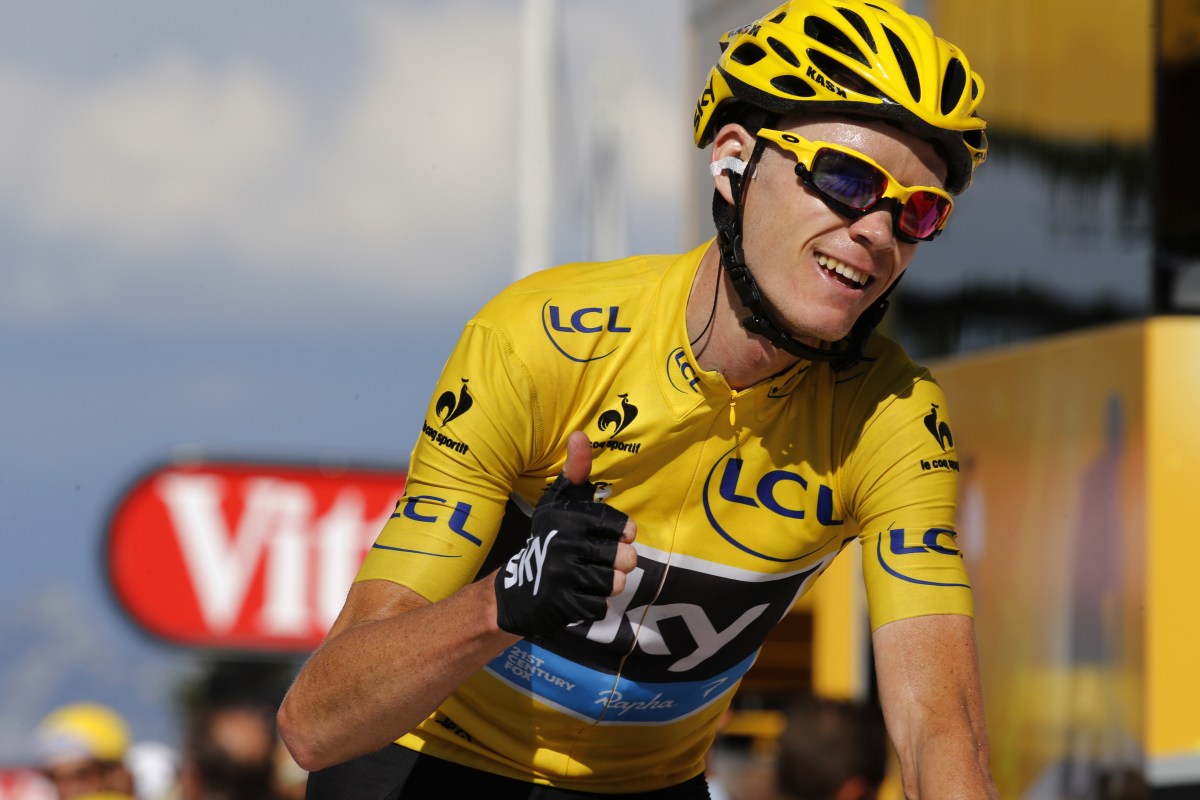
Britain's Chris Froome wins the 2013 Tour de France winner, making it back-to-back British winners of the cycling race.
"We’re riding the same exact course,” McCormac says. “After we finish riding, we can watch 40 minutes of riders passing through, and everybody is suffering in the same way we did.”
While many riders and spectators regard the climb as the toughest part of the course, 66-year-old Nancy Cattabiani believes that the descent is where the gap between amateur and professional riders is most apparent. During her time on two of Reilly Cycling Tour’s trips, Cattabiani remembers the cautions from McCormac and the other guides about the perilous the steep downward climbs.
“They warned us and said ‘We don’t have a rubber band on you if you go over,” she says. “You can’t understand how dangerous the descent down the mountains is until you are there. These guys go down at 40 mph—to me, that’s when you realize the difference in talent.”
McCormac says it’s a big leap of faith to go on the Tour de France trip because it’s not only a physical challenge but also an emotional experience. After his group finishes its ride and watches the best cyclists race on the greatest bike course in the world, he says there are always a lot of teary eyes. Widder remembers the feeling.
“We aren’t going to get into Yankee Stadium or Wimbledon, but we can be on the same climbs as the tour riders which is just amazing,” Widder says. “We have the dreams and they make it possible.”
